As one gets older, some things that used to be possible cease to be possible and the world seems smaller and more limited. This is not always due to increasing infirmity...
Not many years ago it was possible to take a ferry from Rosyth to Zeebrugge, another from Newcastle to Gothenburg - later the destination changed to Bergen - and from Harwich to Esbjerg. All these have gone. Only Newcastle and Hull have ferries across the North Sea to the continent, avoiding a long journey south to the short channel crossings. It is almost as though the ferry operators knew Brexit was coming!
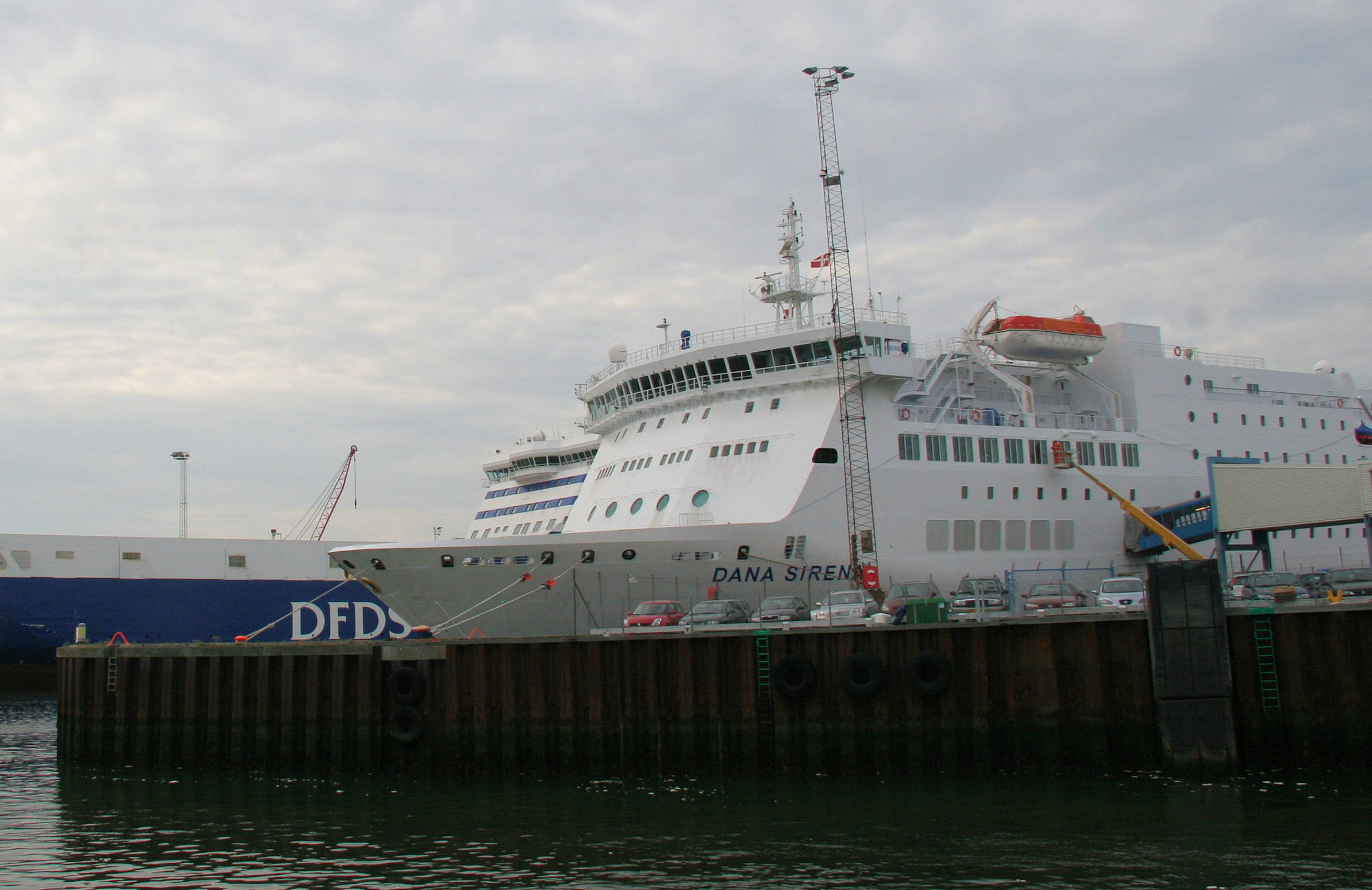
This handsome ferry, the Dana Sirena, used to be on the Harwich Ebsjerg route. It has now changed its name and sails from Portsmouth for Brittany Ferries.
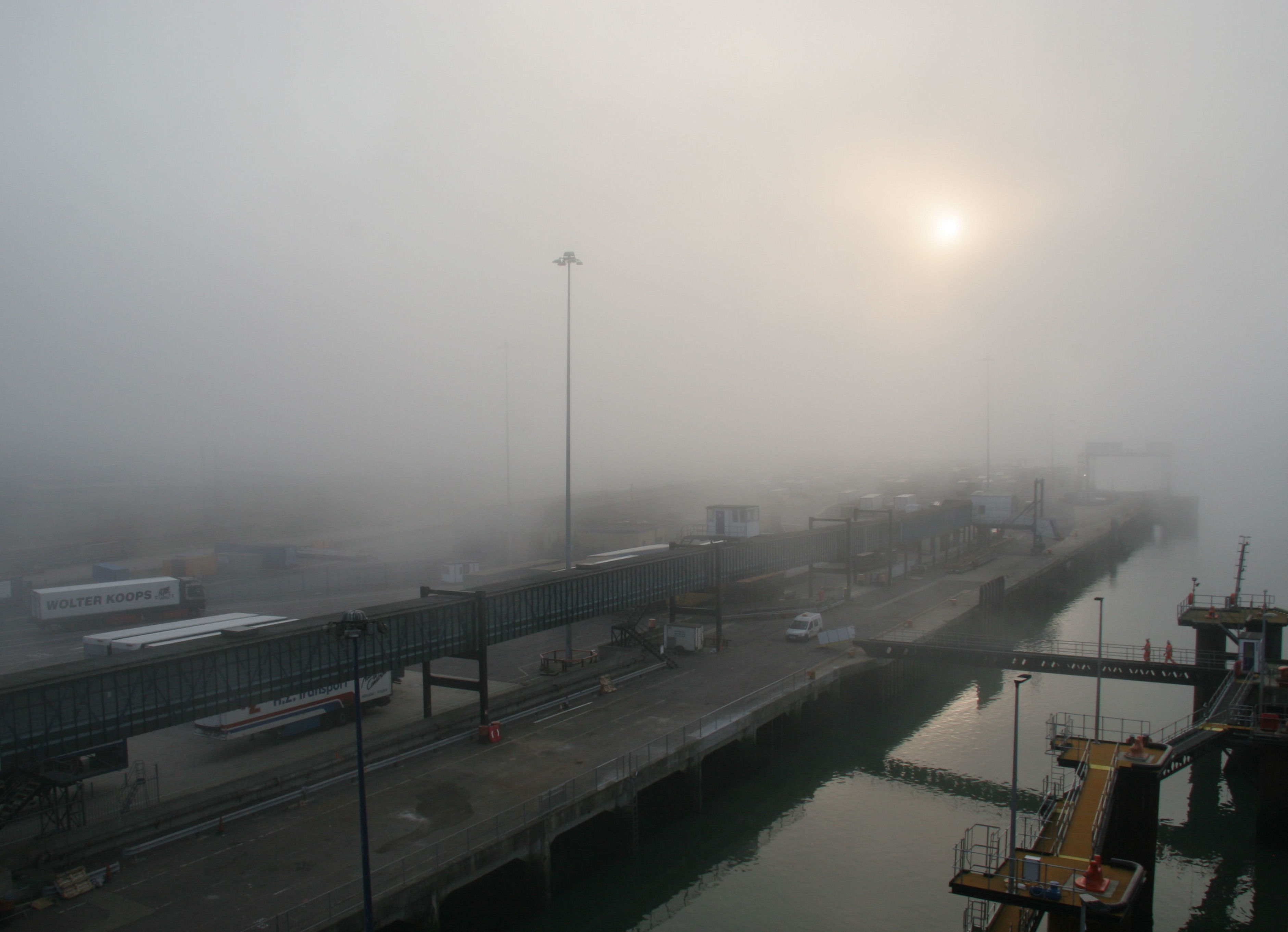
We last made a crossing on the Dana Sirena in 2014, starting the journey on a misty September evening.
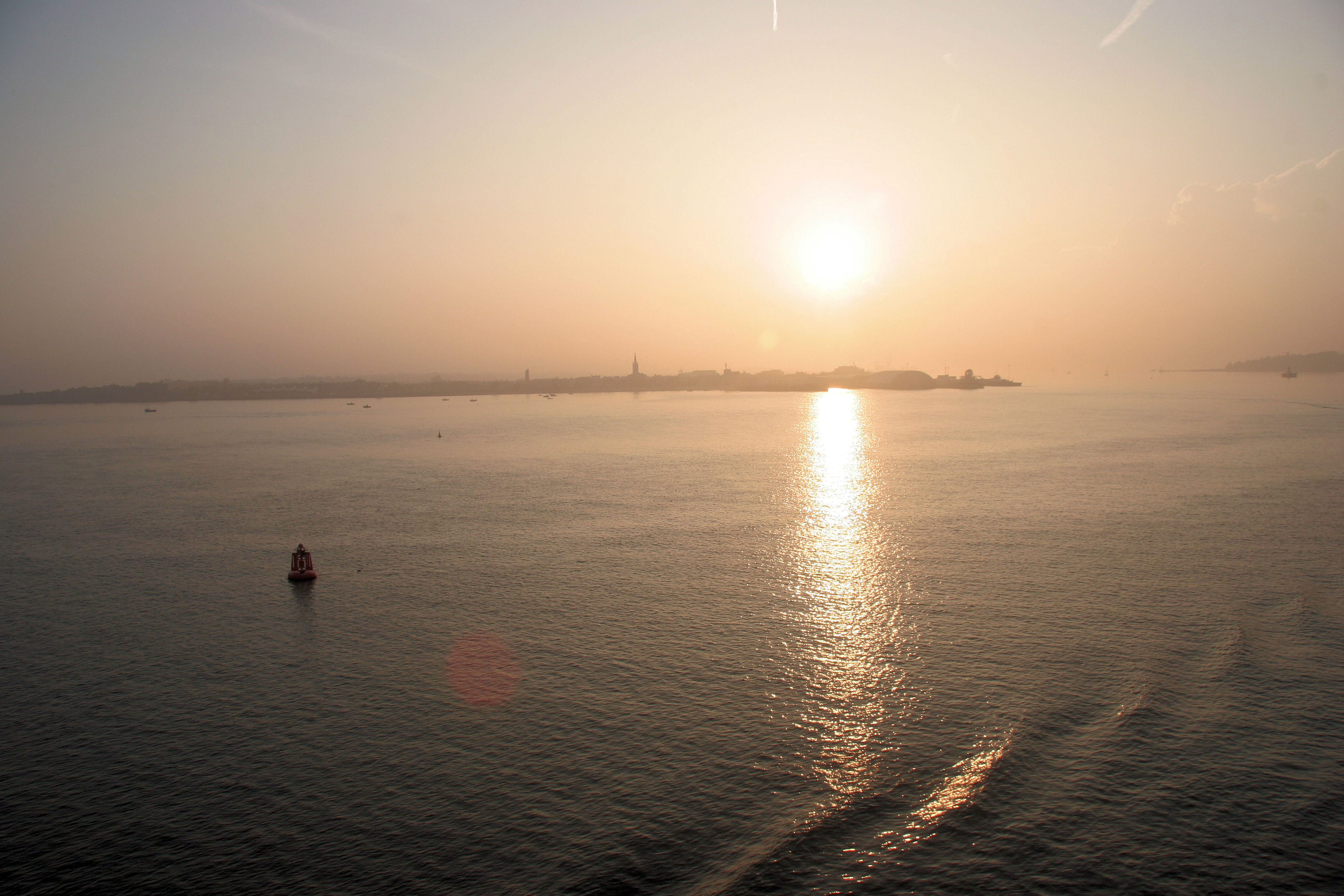
The mist cleared as the ship moved out into the estuary of the Stour and Orwell...

...and north past the largest port in Britain, Felixstowe - an east facing port who's status may well change post Brexit.
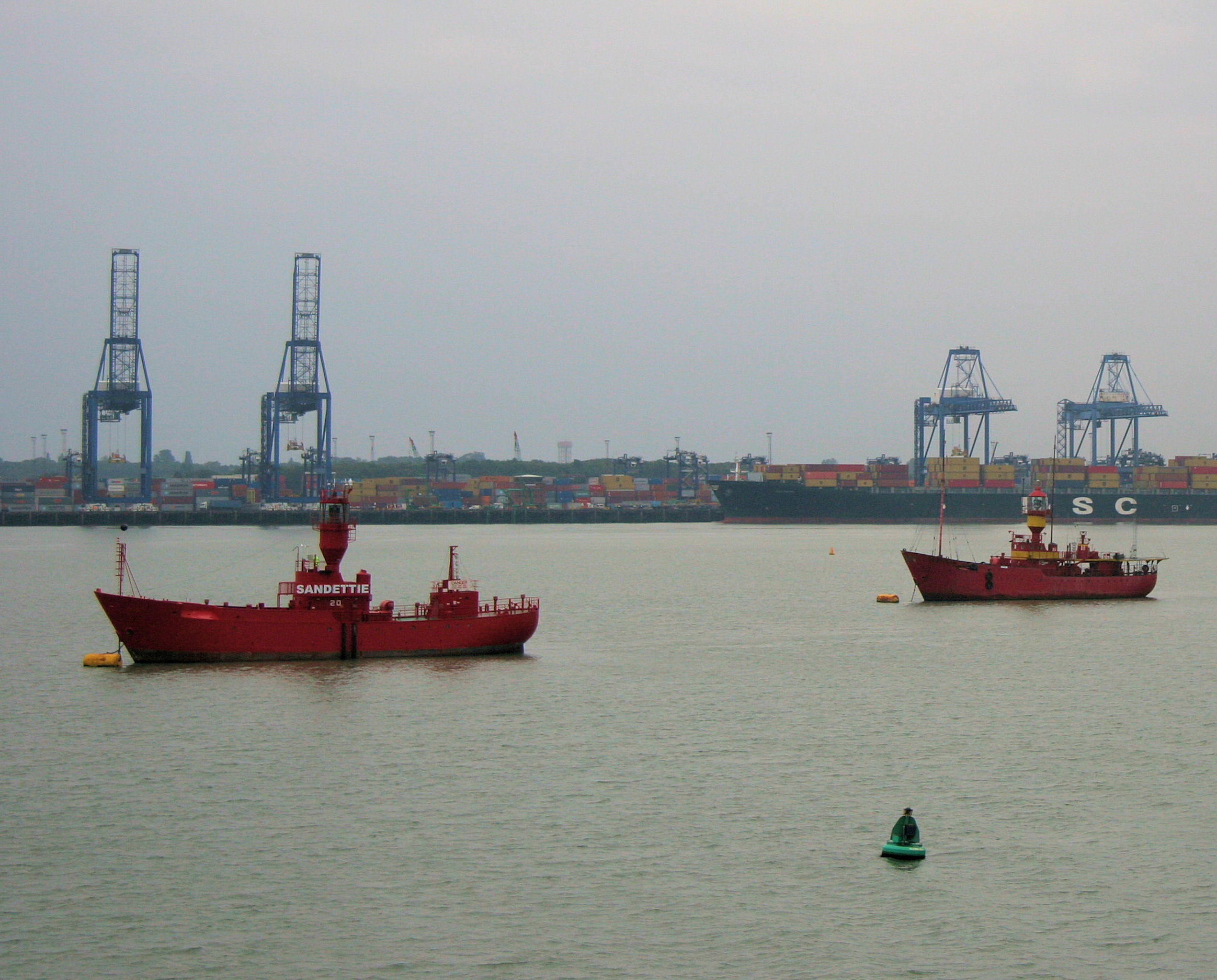
Those of you who lie awake and listen to the shipping forecast before 1am will be very familiar with this name...
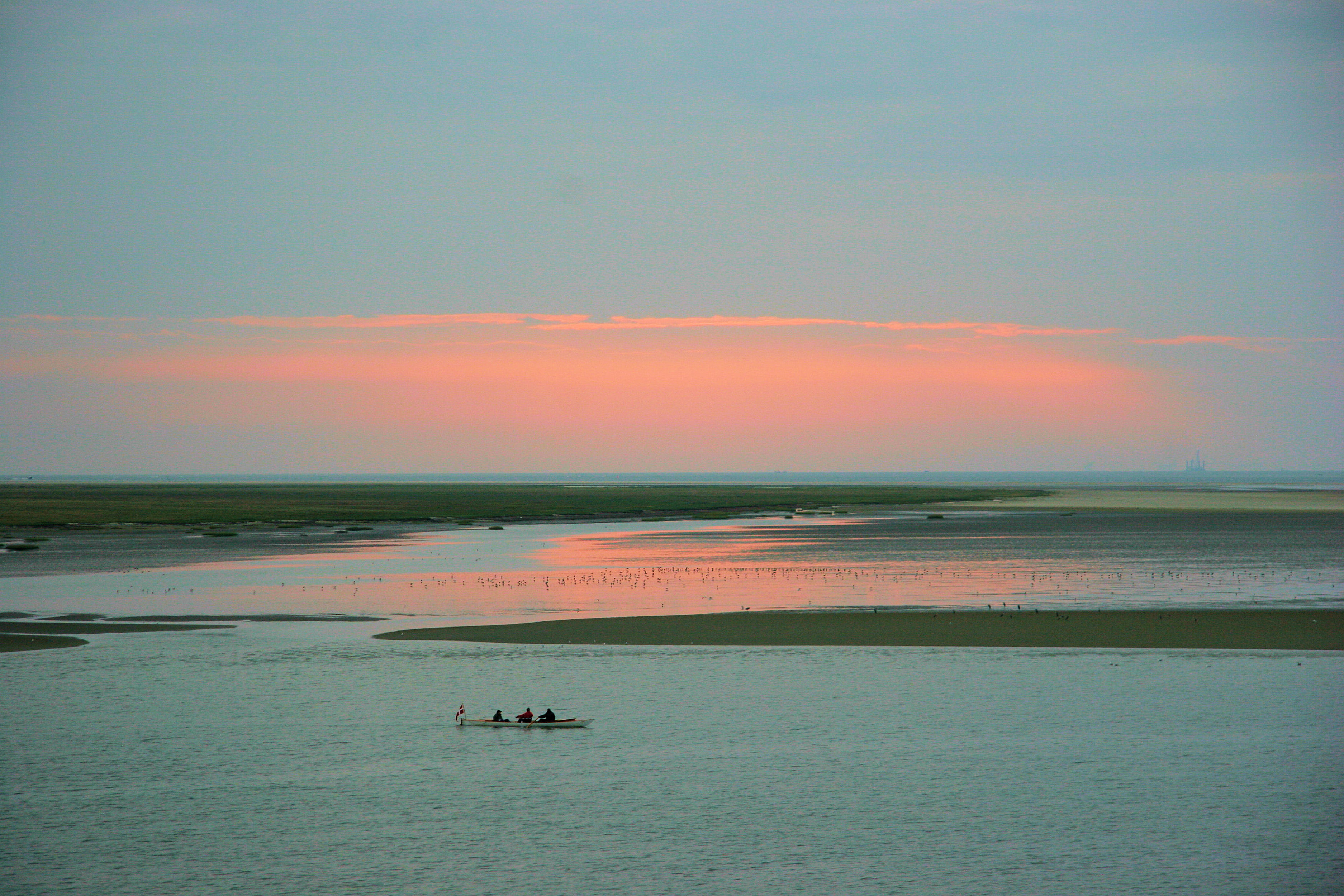
The east coast of Denmark is very low lying and sandy, but has its own stark beauty.
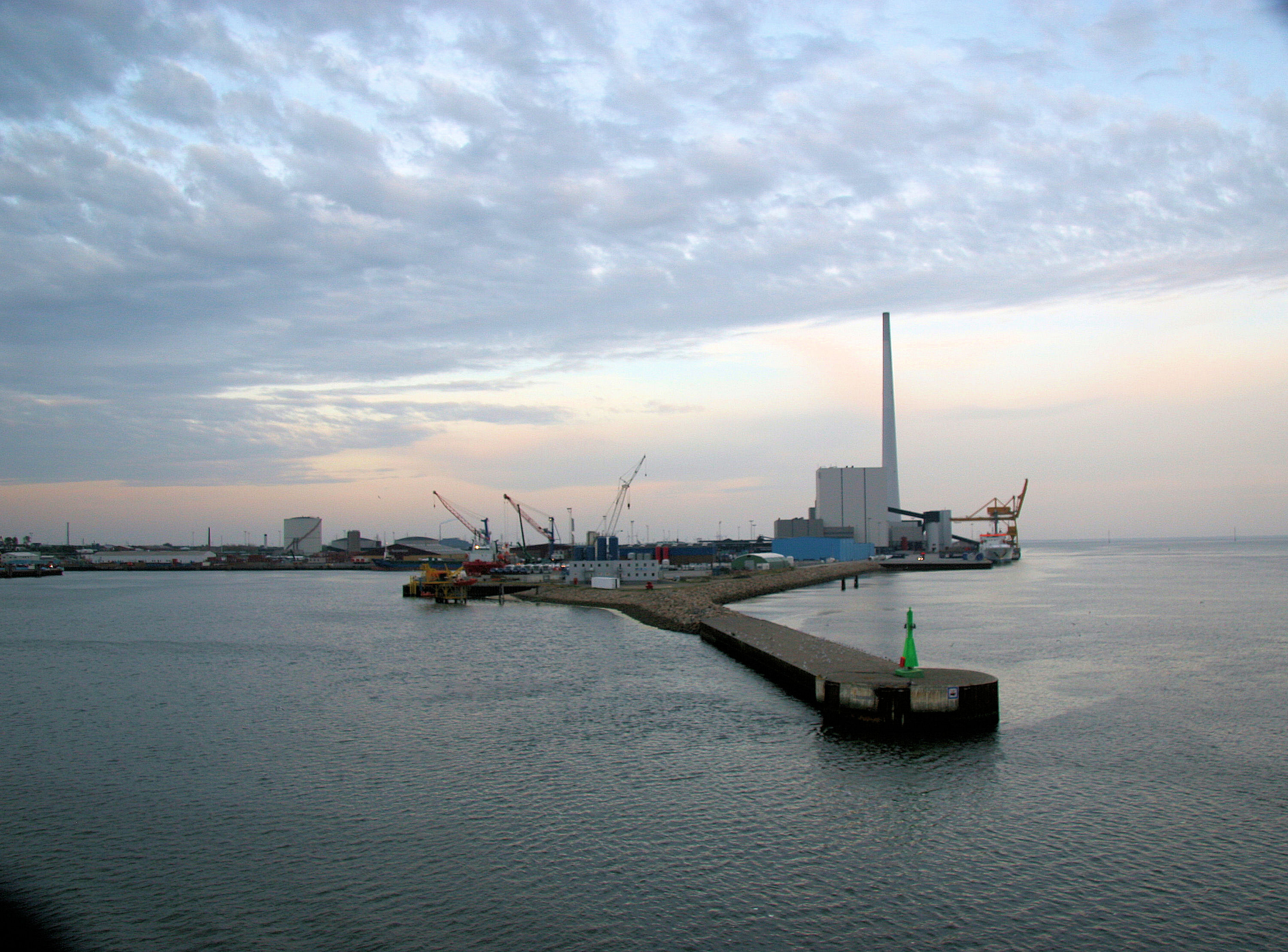
The Dana Sirena slips into Esbjerg harbour.

Some of our fellow passengers, who have been sheltering under the vehicles on the open car deck all night, make their way ashore ahead of the crowd.

We are on our way to Hamburg via Copenhagen. Esbjerg Station is a short bus ride from ferry terminal where we catch the afternoon train to the capital, a city we know well.
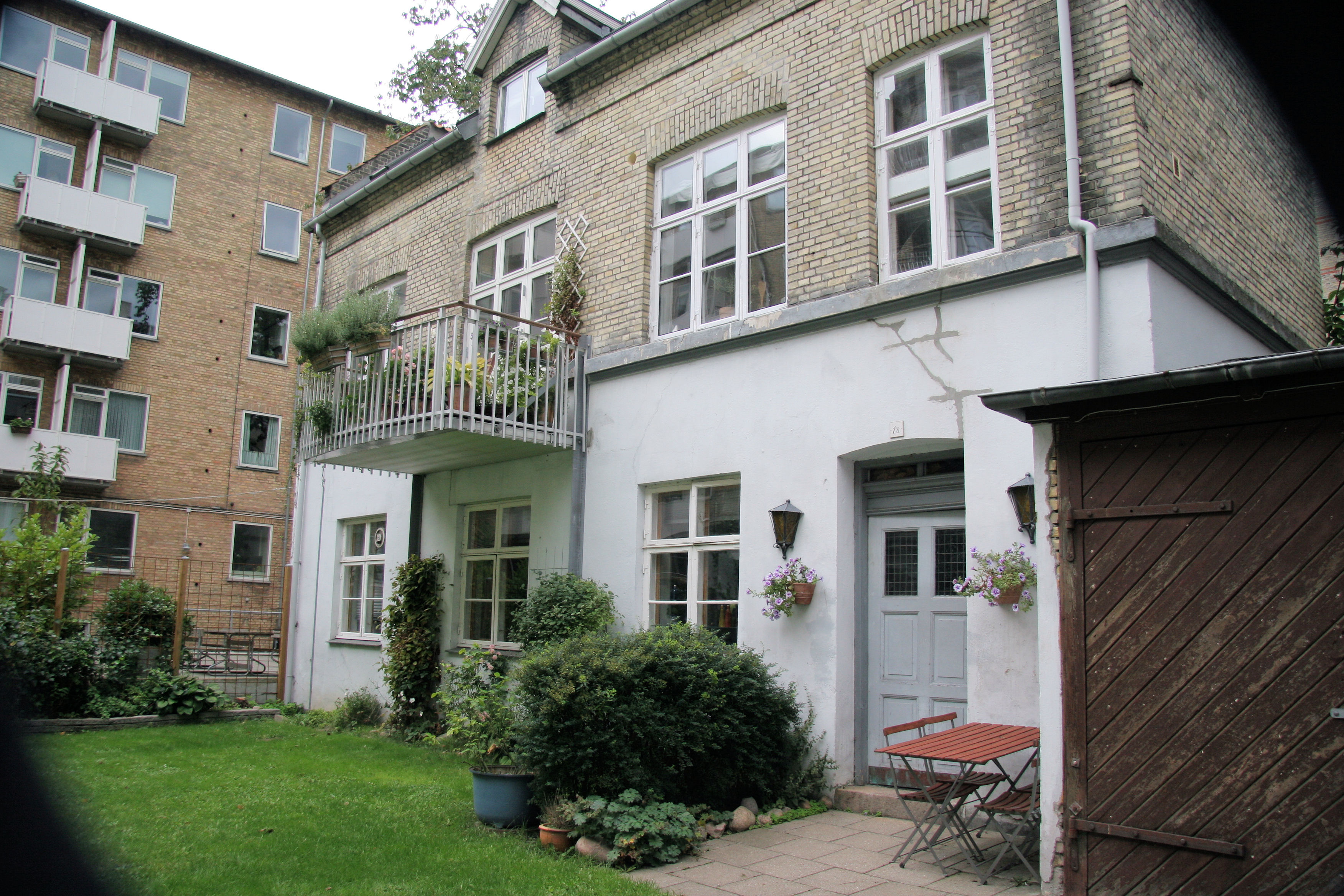
On a previous visit we had stayed in this very quiet flat for over a week...
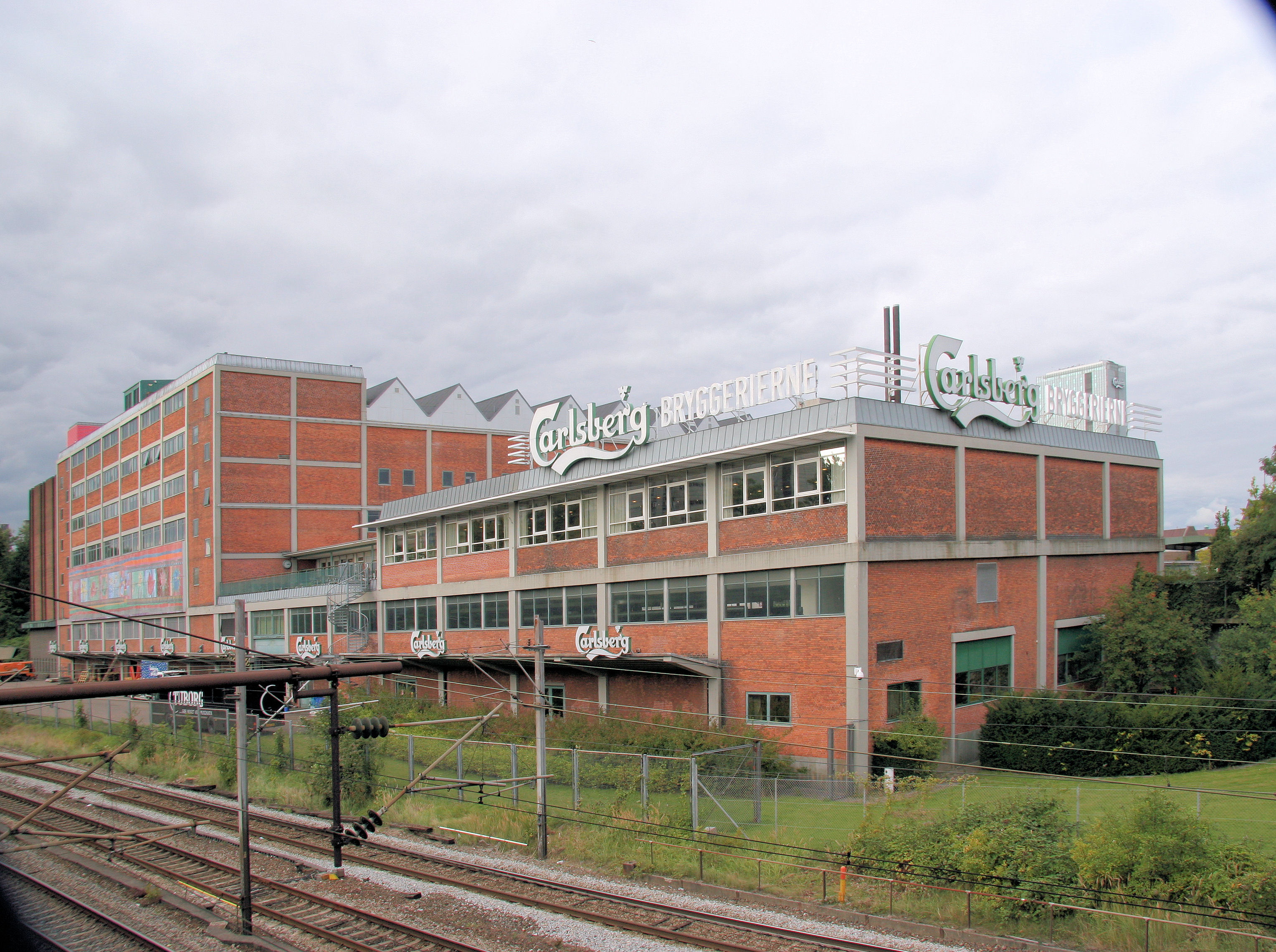
...and immersed ourselves in Danish culture...
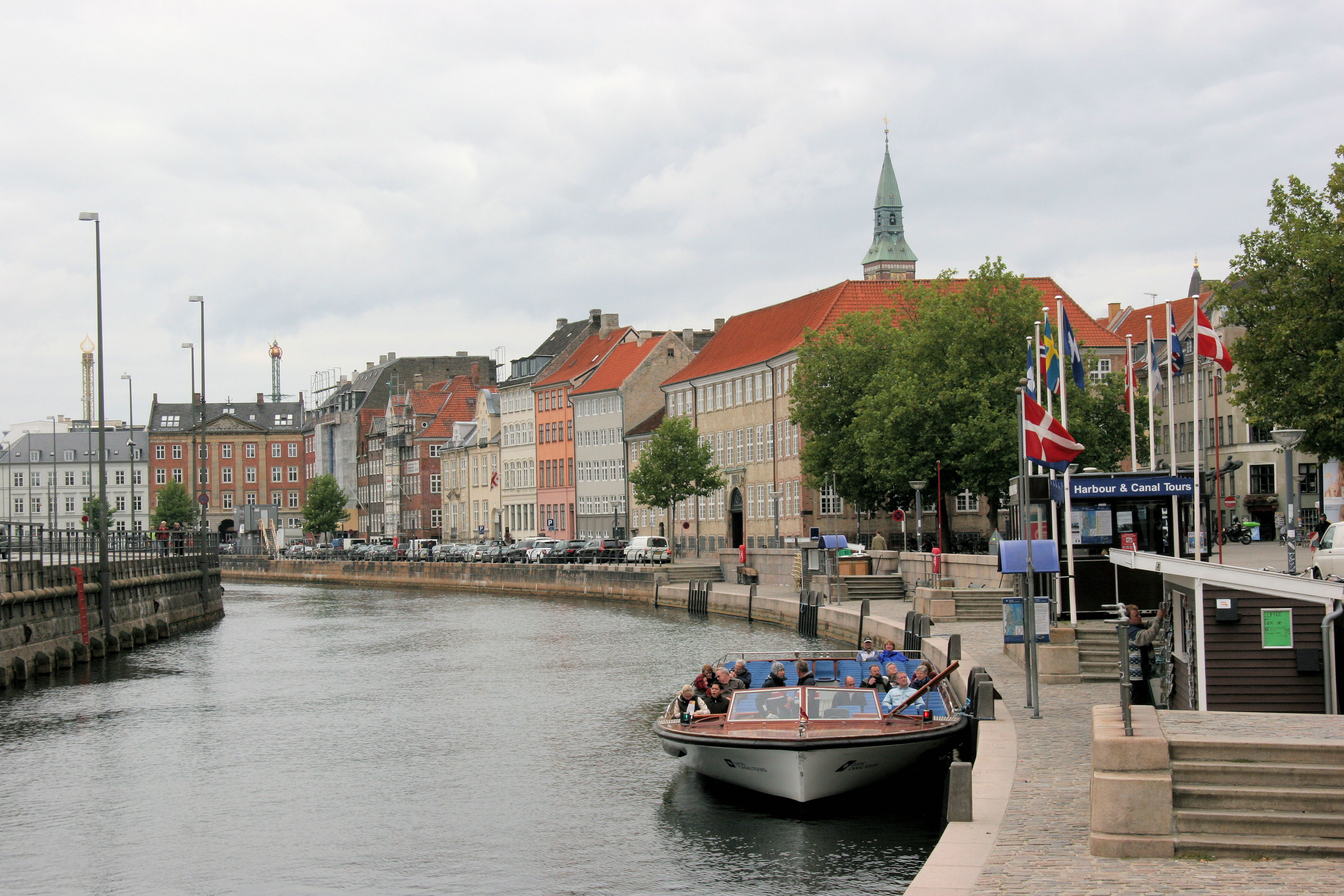
...and walked everywhere...
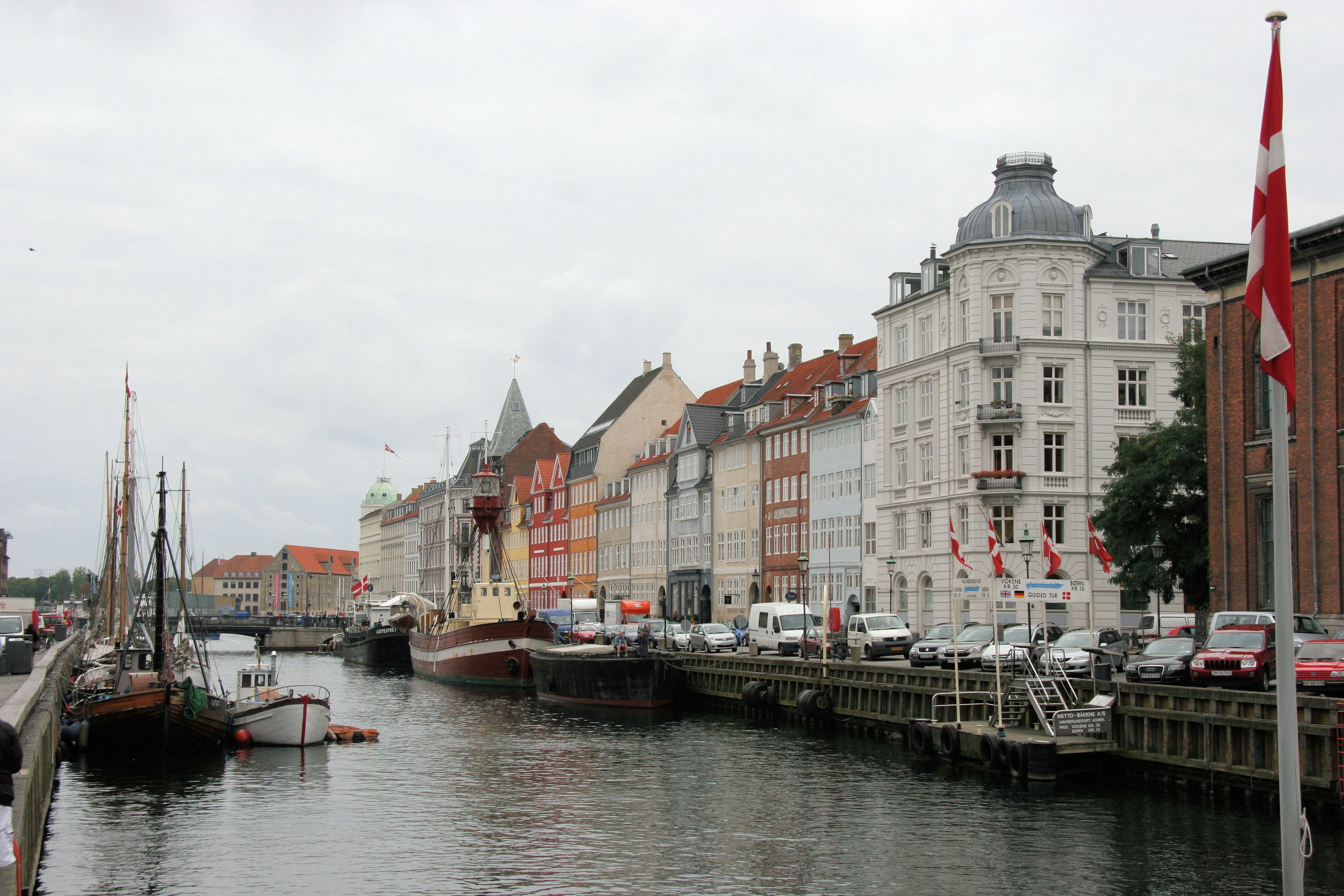
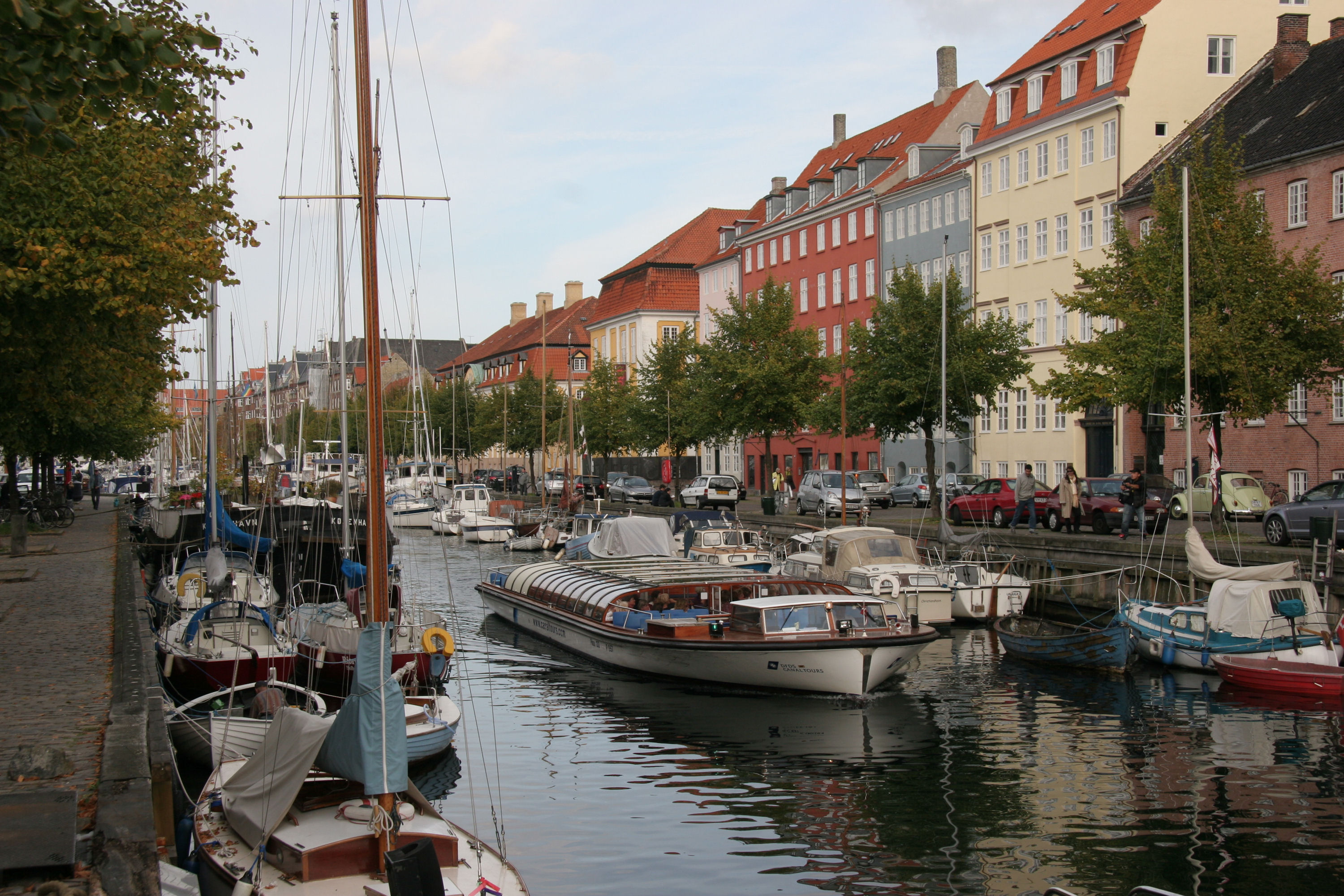
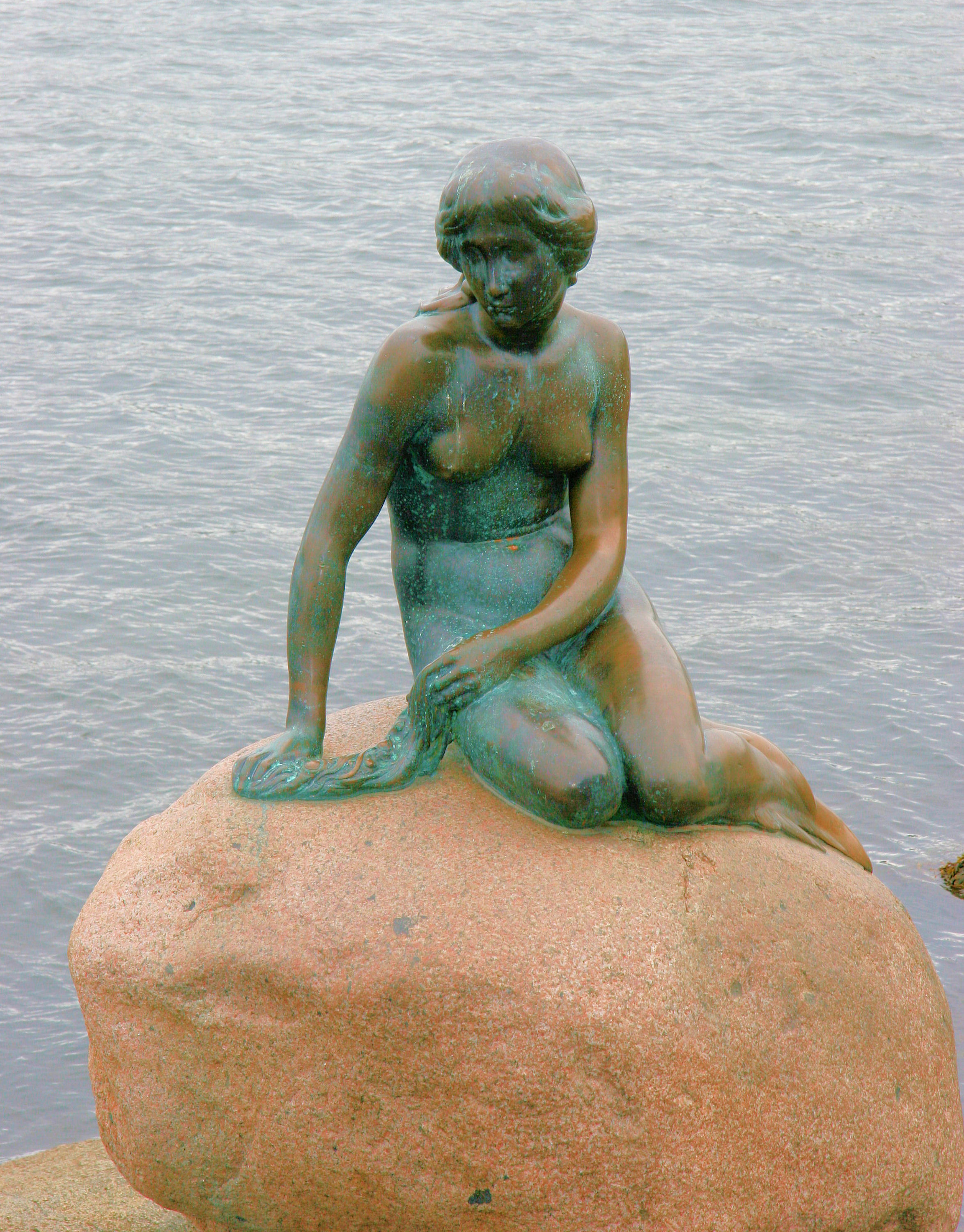
...saw everything tourists are encouraged to visit...For more images of Copenhagen, click here.
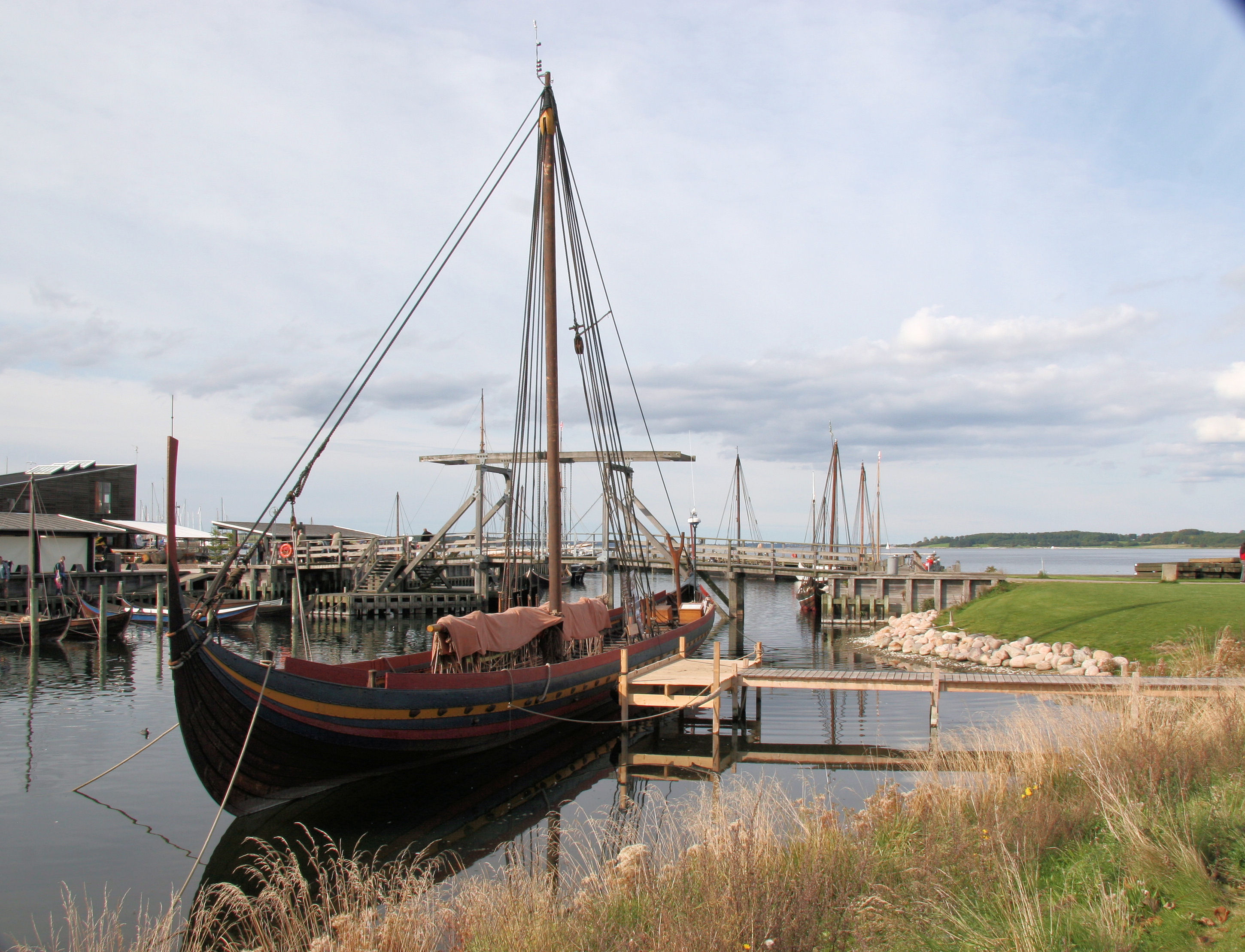
...and visited some attractions nearby. We particularly liked the Viking Museum at Roskilde...
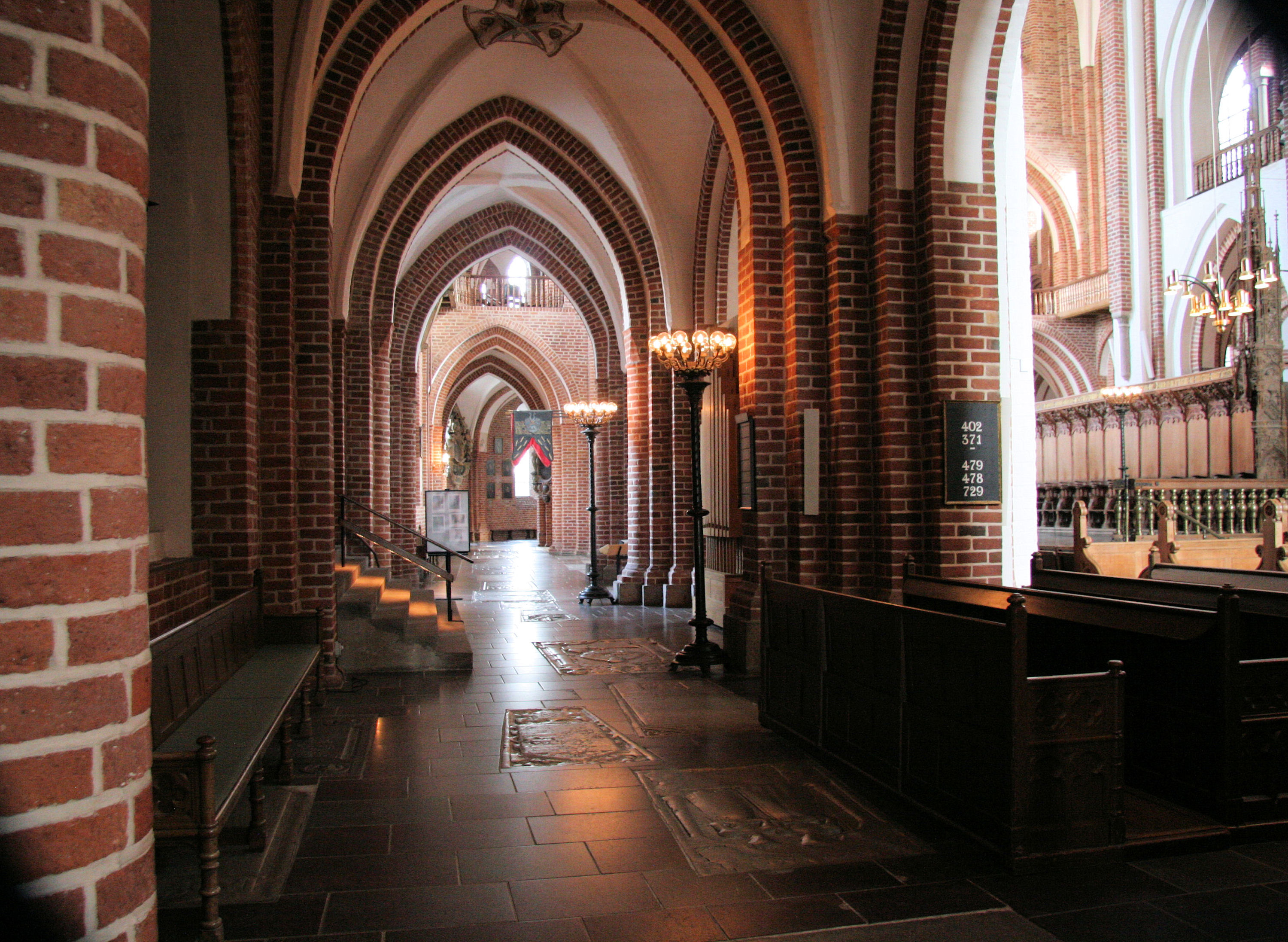
..and were impressed by its magnificent brick cathedral.
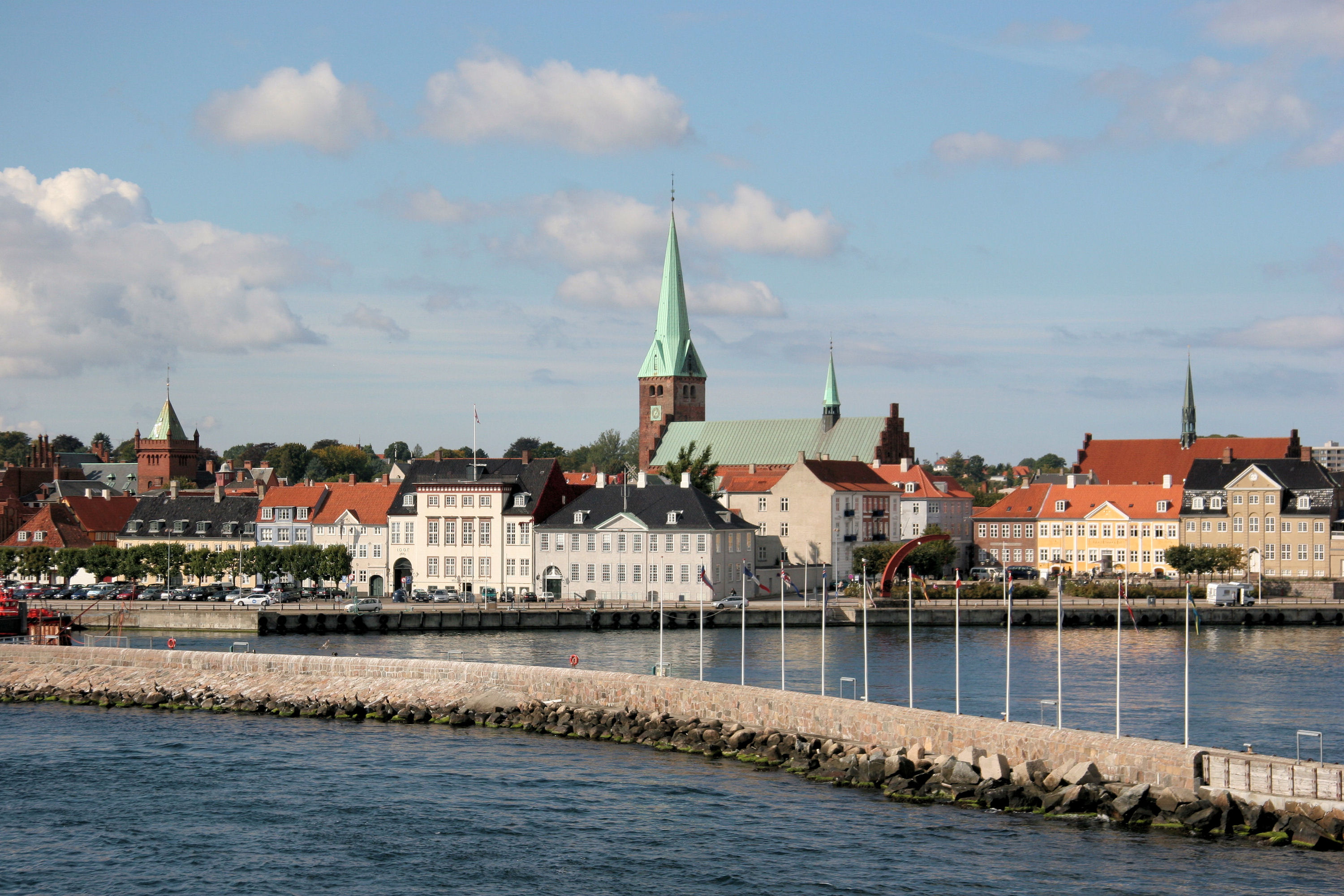
We also visited Helsingor - an unremarkable town -
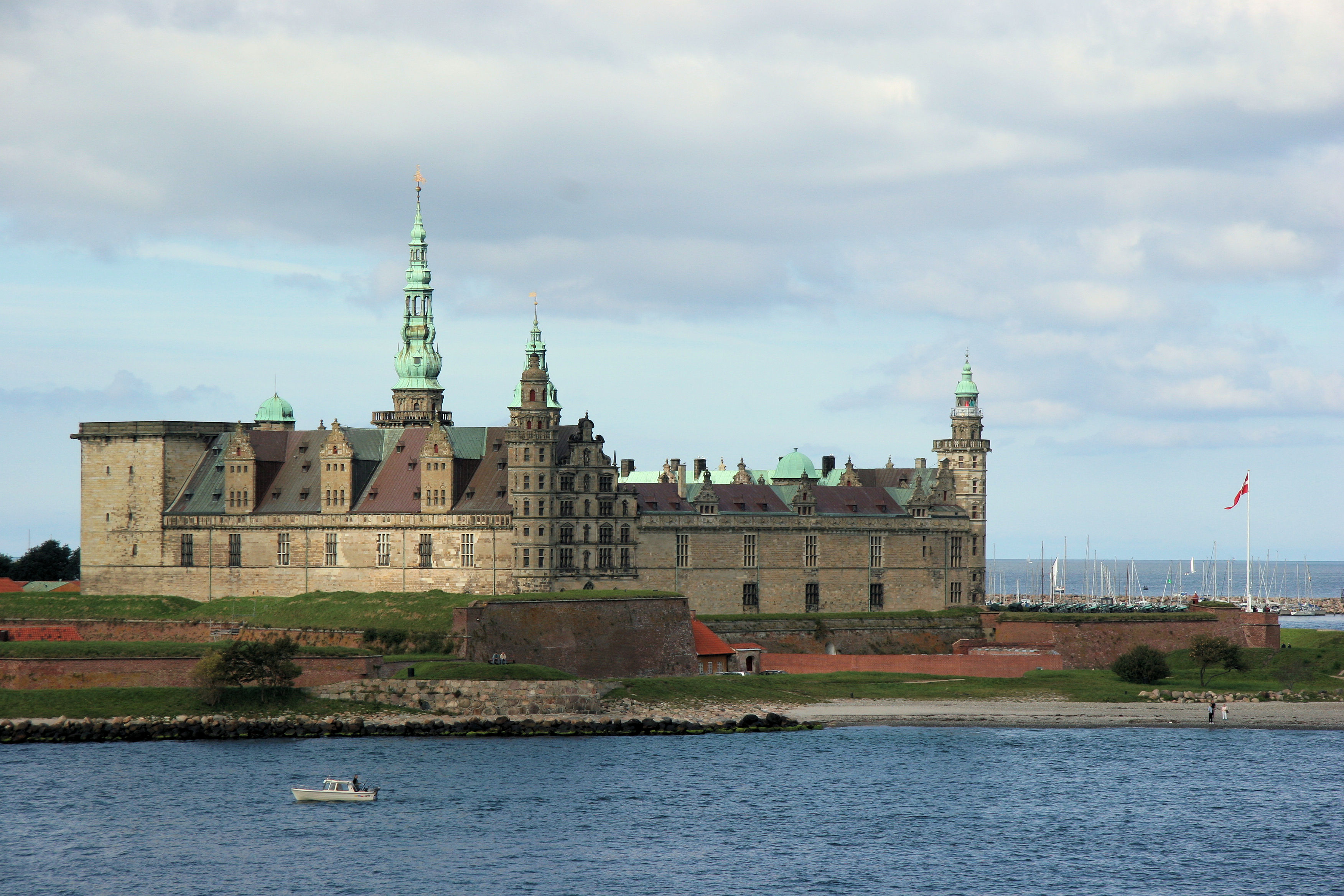
...but with a remarkable castle of "Hamlet" fame.
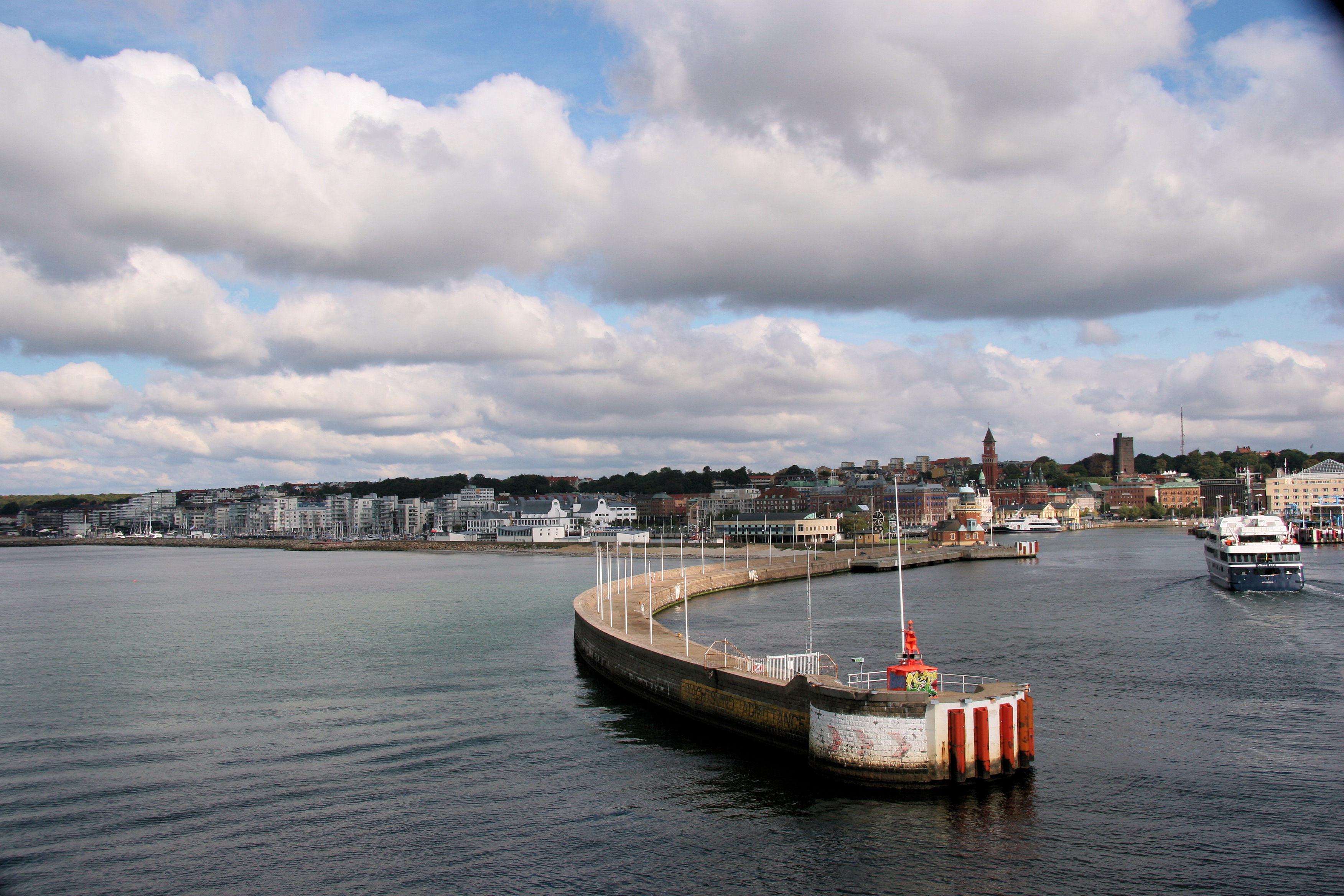
We made our first visit to Sweden by crossing the narrow strait to Helsingboug - another unremarkable, though pleasant enough town.
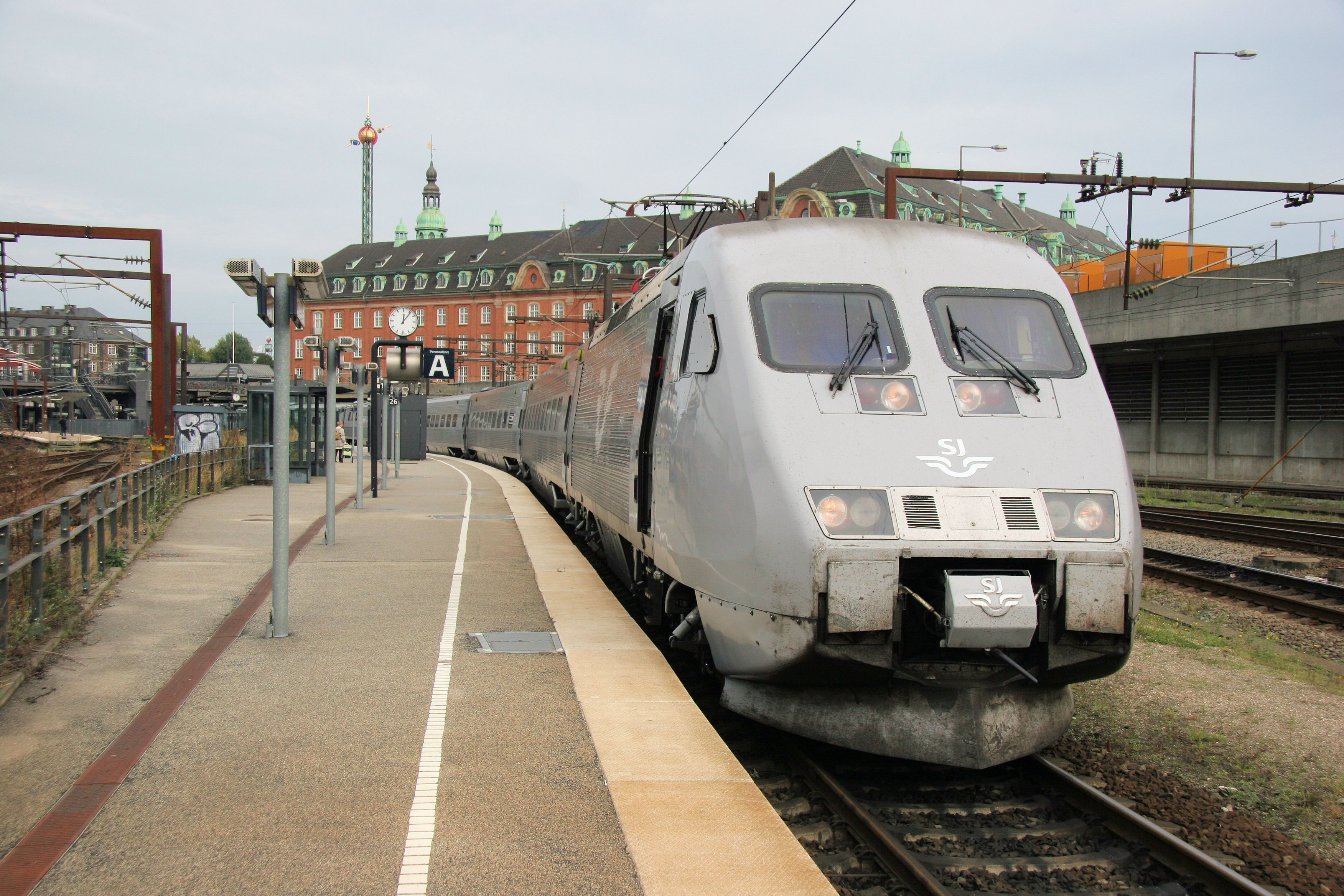
On this trip we were just passing through Copenhagen and after only one night we returned to Central Station to catch a Deutsche Bahn train to Hamburg. There was time however, to check out this Swedish high speed international train which was bound for Stockholm.
(Something that always makes me smile is the "flash mob" film from the main concourse of the station. You can see if it has the same effect on you at https://www.youtube.com/watch?v=mrEk06XXaAw)
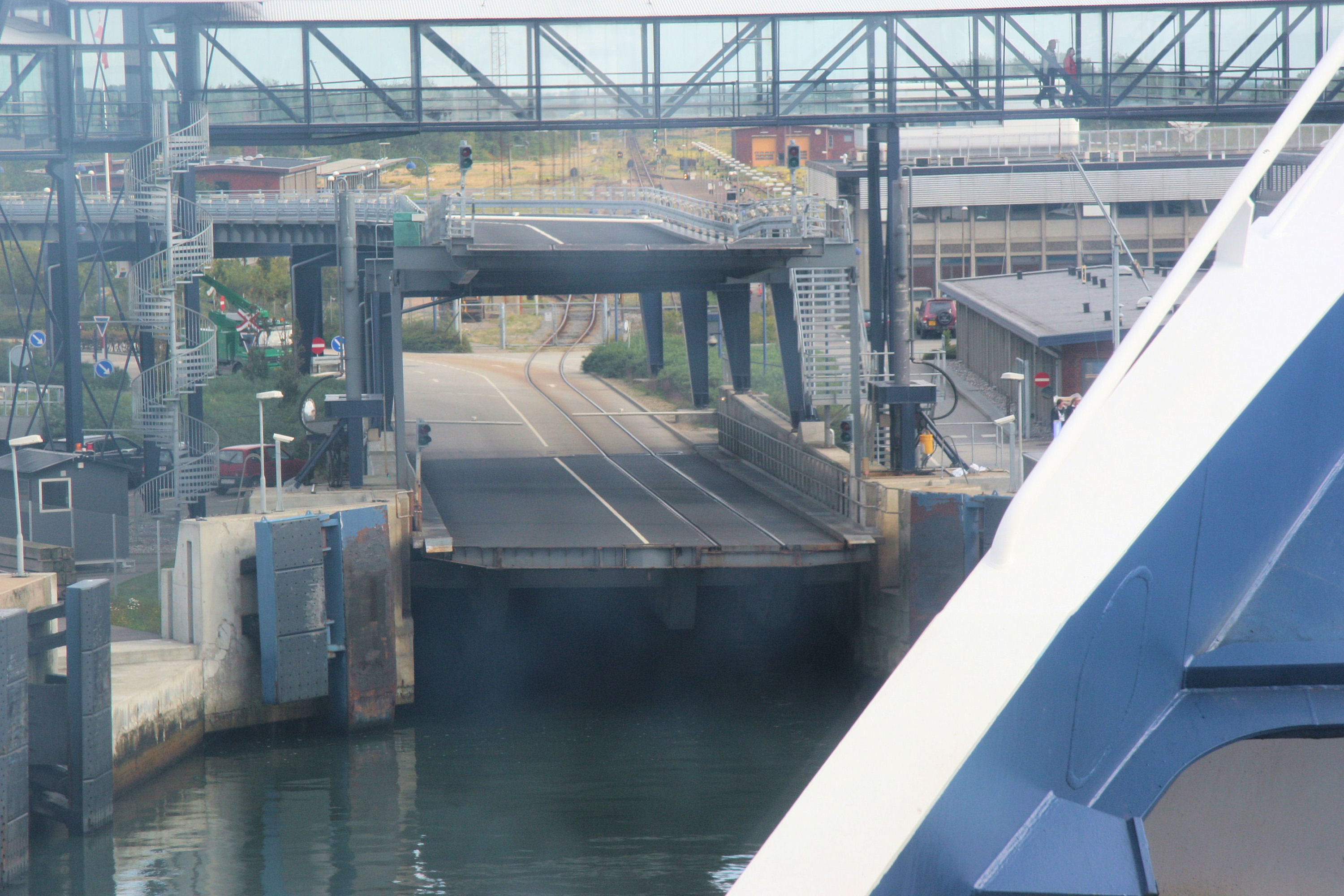
At Rodby. the most southerly point of Danish Zeeland, the train runs on to a ferry which in forty minutes, just enough time for a drink and a visit to the shops, carries the train across the strait to Puttgarden in Germany.
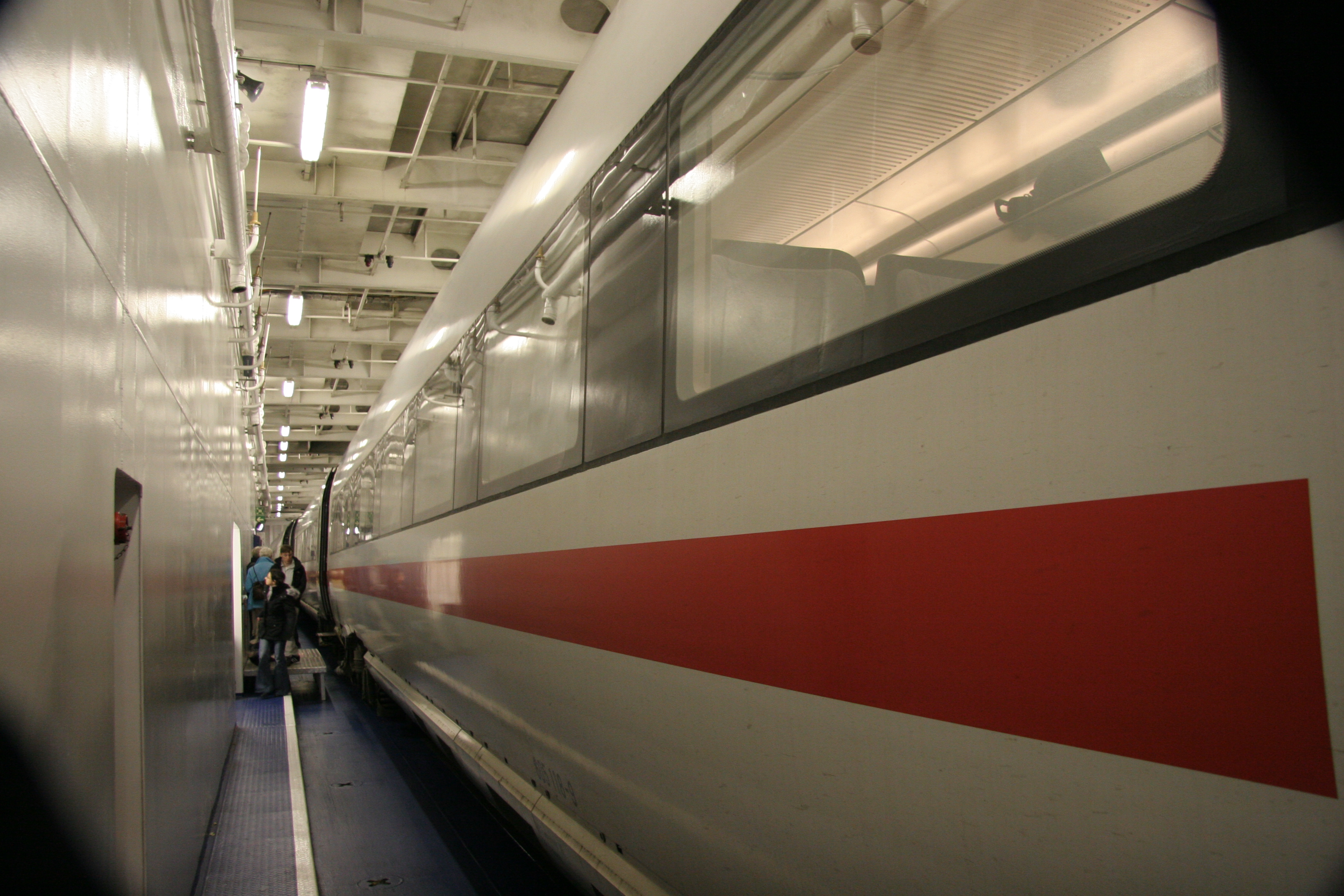
I was nearly caught out by the efficiency of the transit from from ship to shore. I remained on deck to watch the docking procedure, only to look round to find I was the only person who had not returned to the train. A rather panicked dash down through the decks of the ship found me boarding the train with seconds to spare before it moved off.
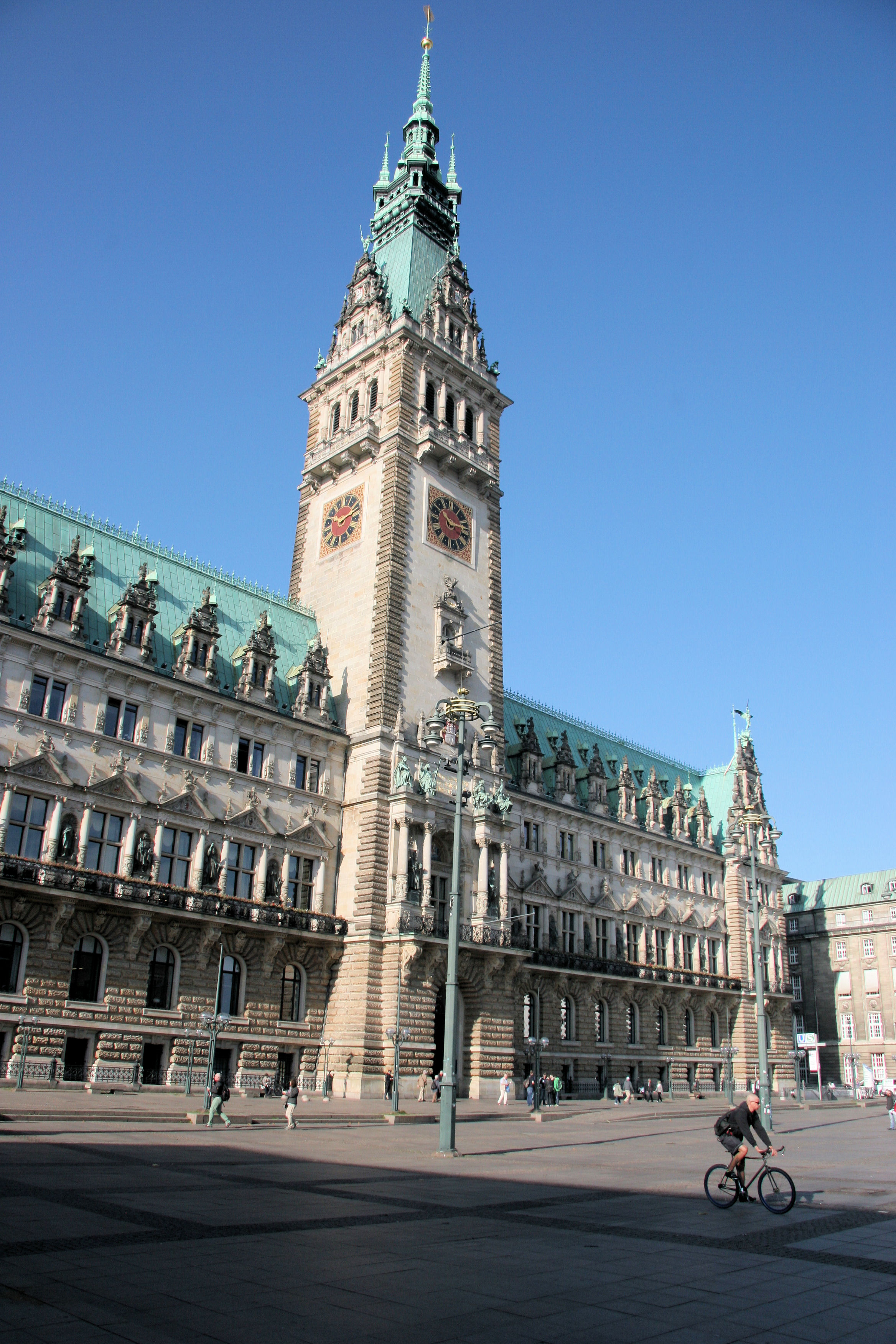
Hamburg is a great city with architecture to match. This is the nineteenth century Rathaus or City Hall, a very attractive and somewhat flamboyant sandstone structure that is the seat of the city and regional government. Hamburg suffered badly during the war and as we explored it was possible to identify old original buildings which had survived or been restored, reconstructions of original buildings and completely new developments.
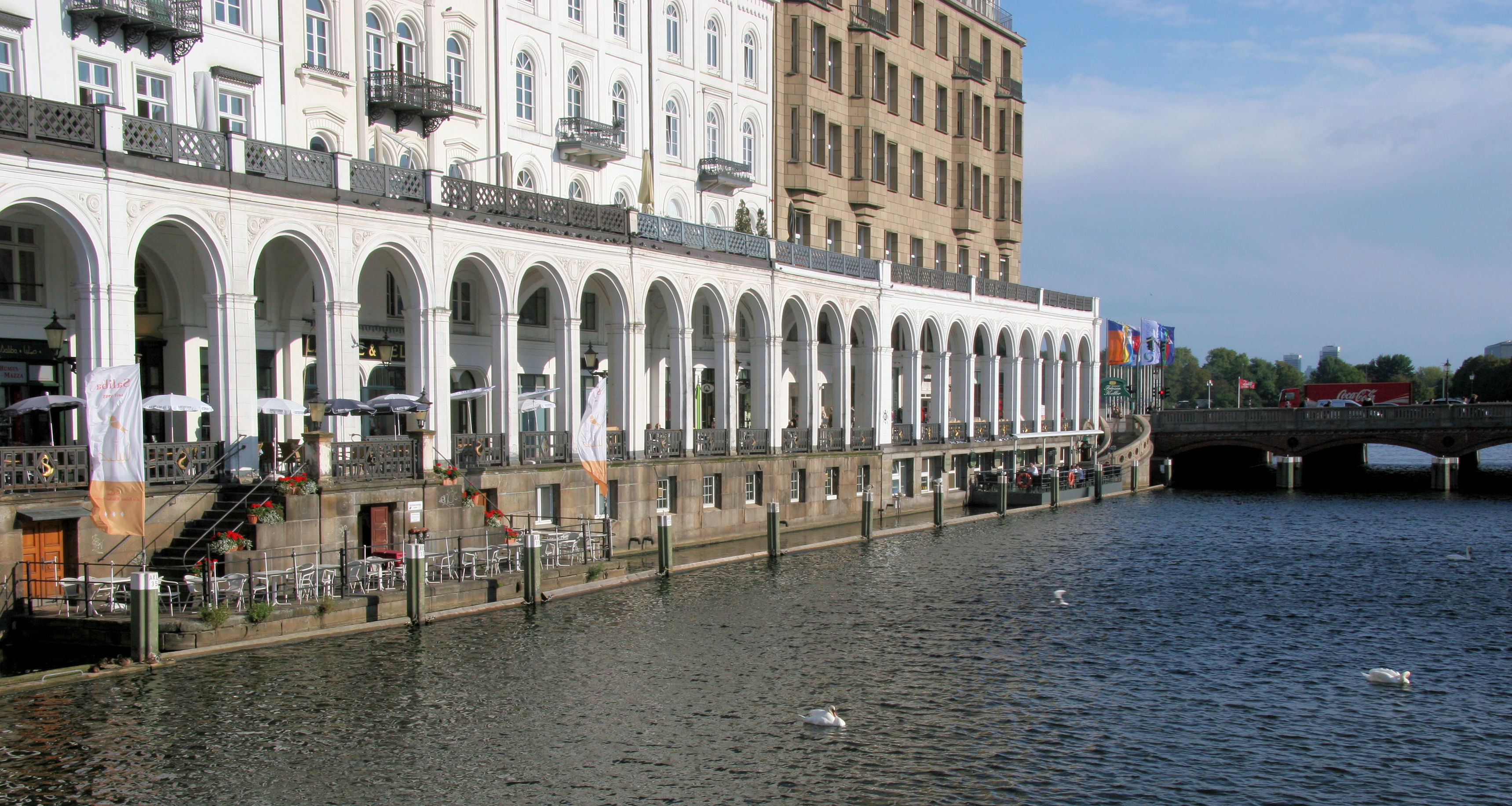
Elegant apartments near the Binnenalster
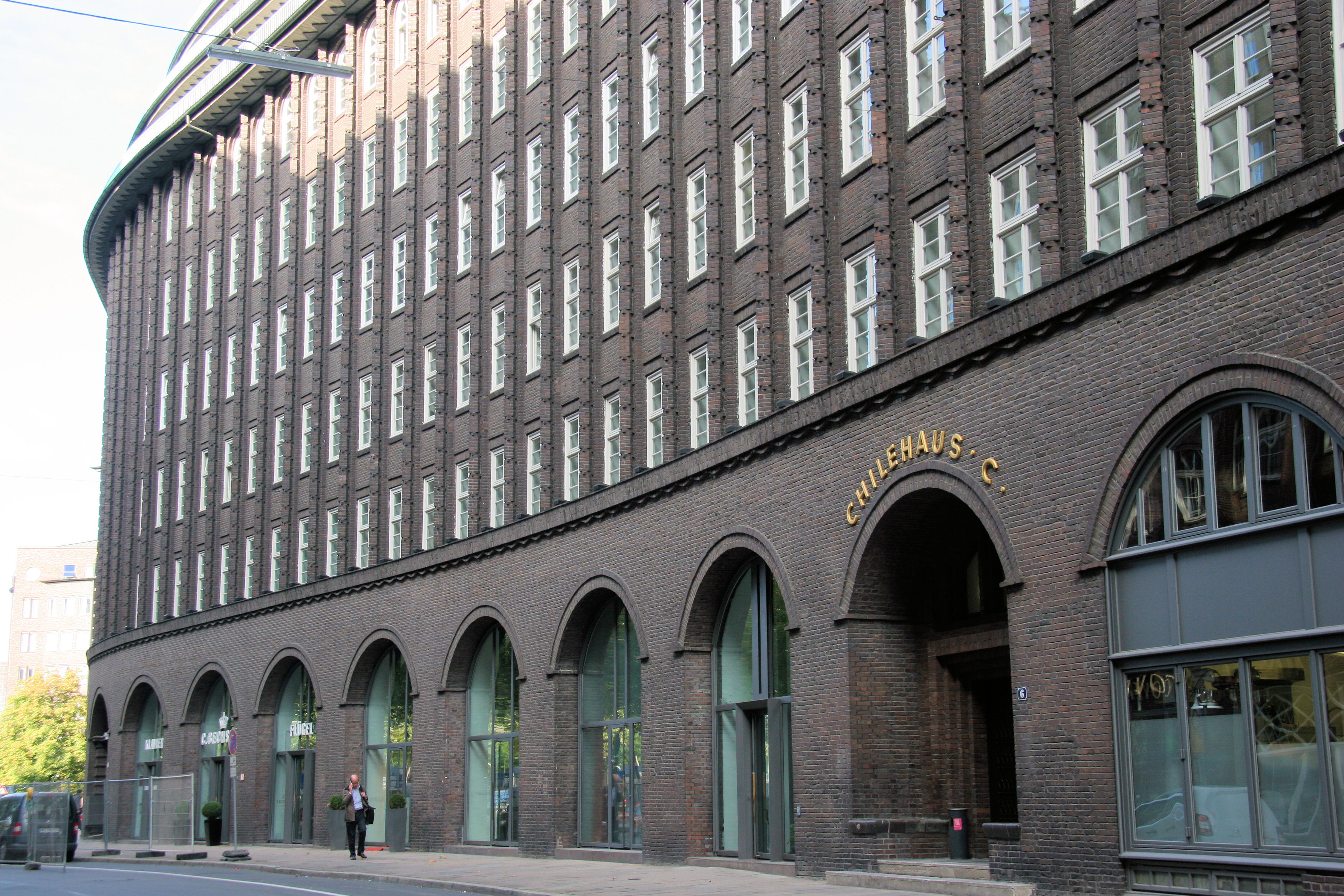
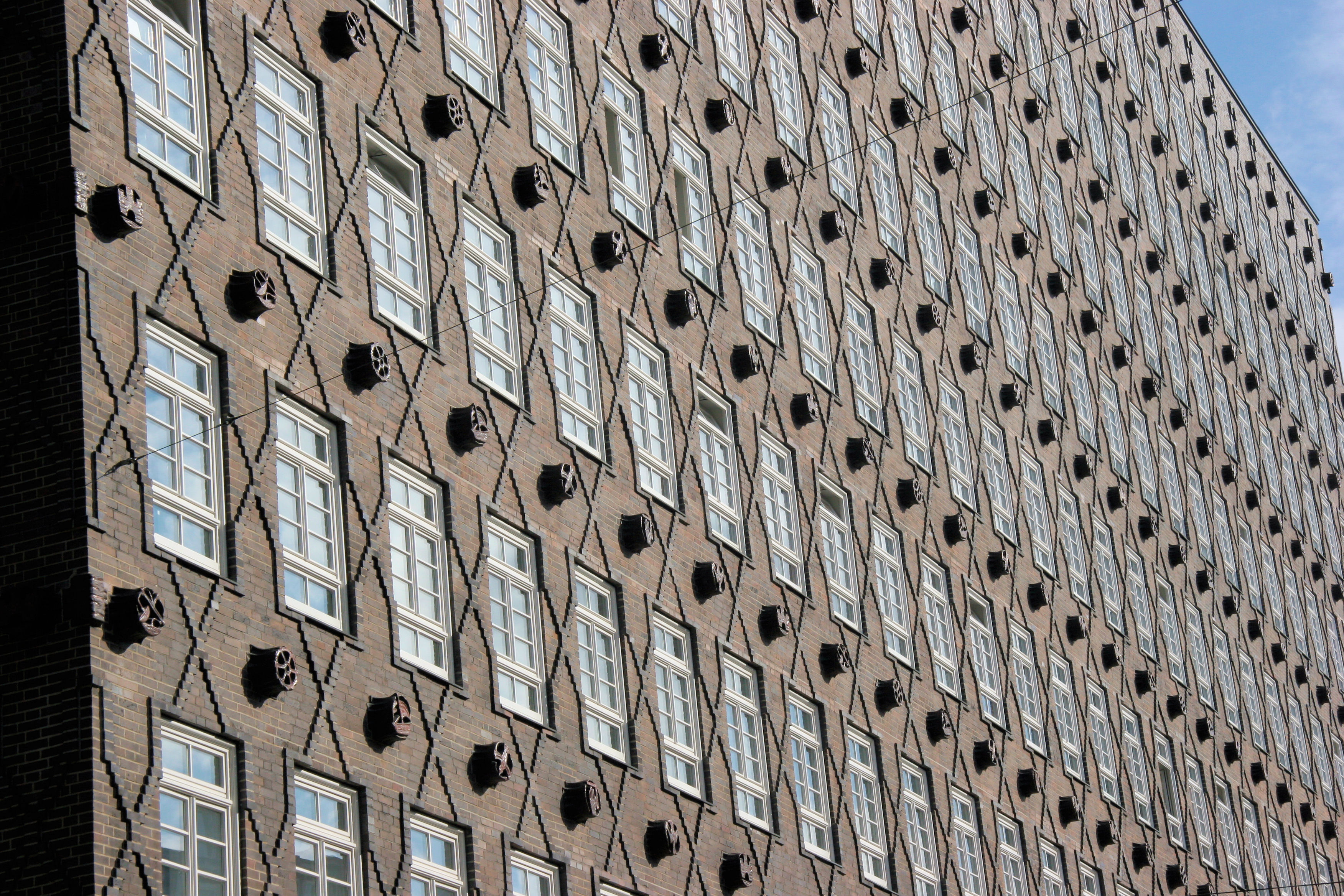
Reconstructed former warehouse buildings
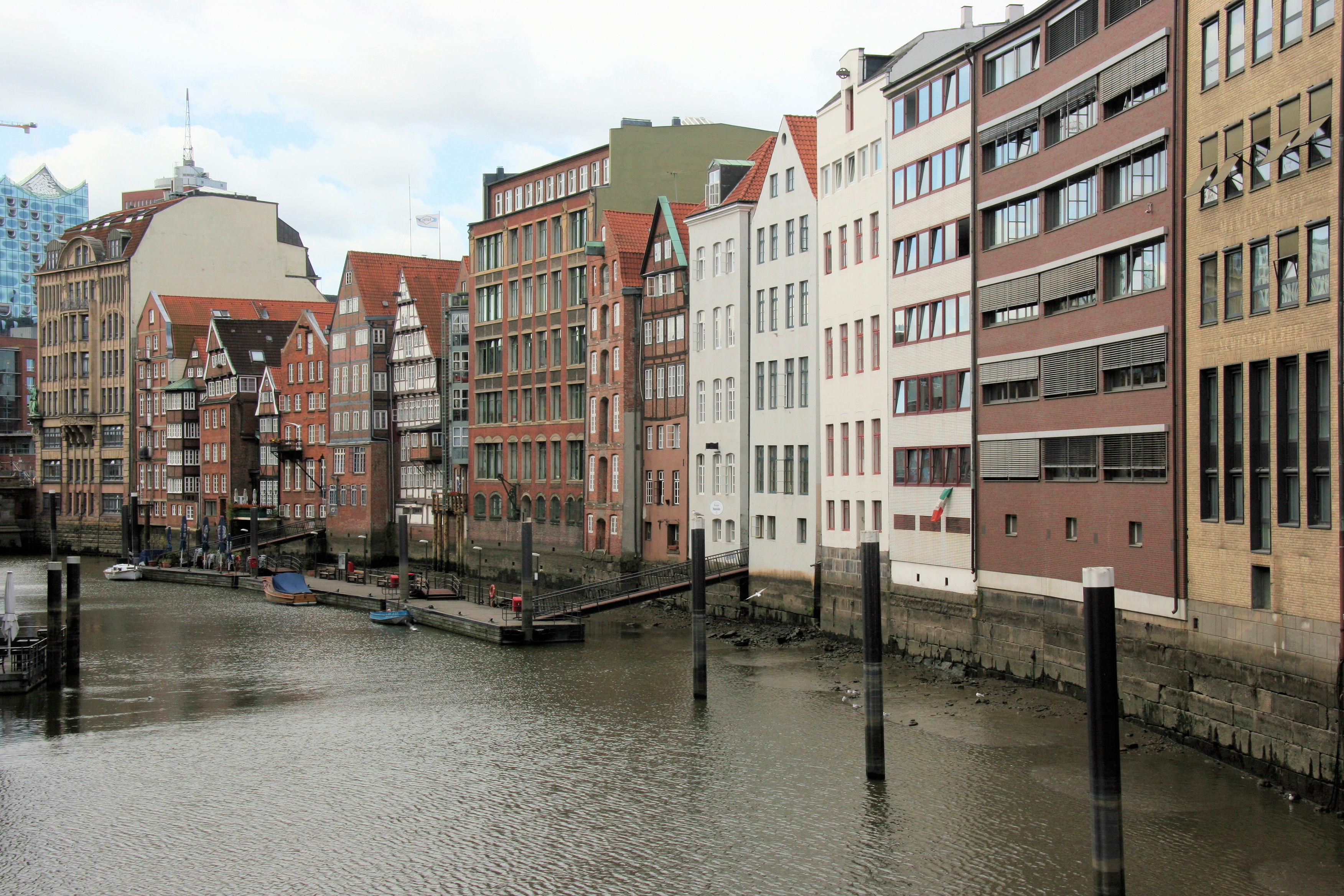
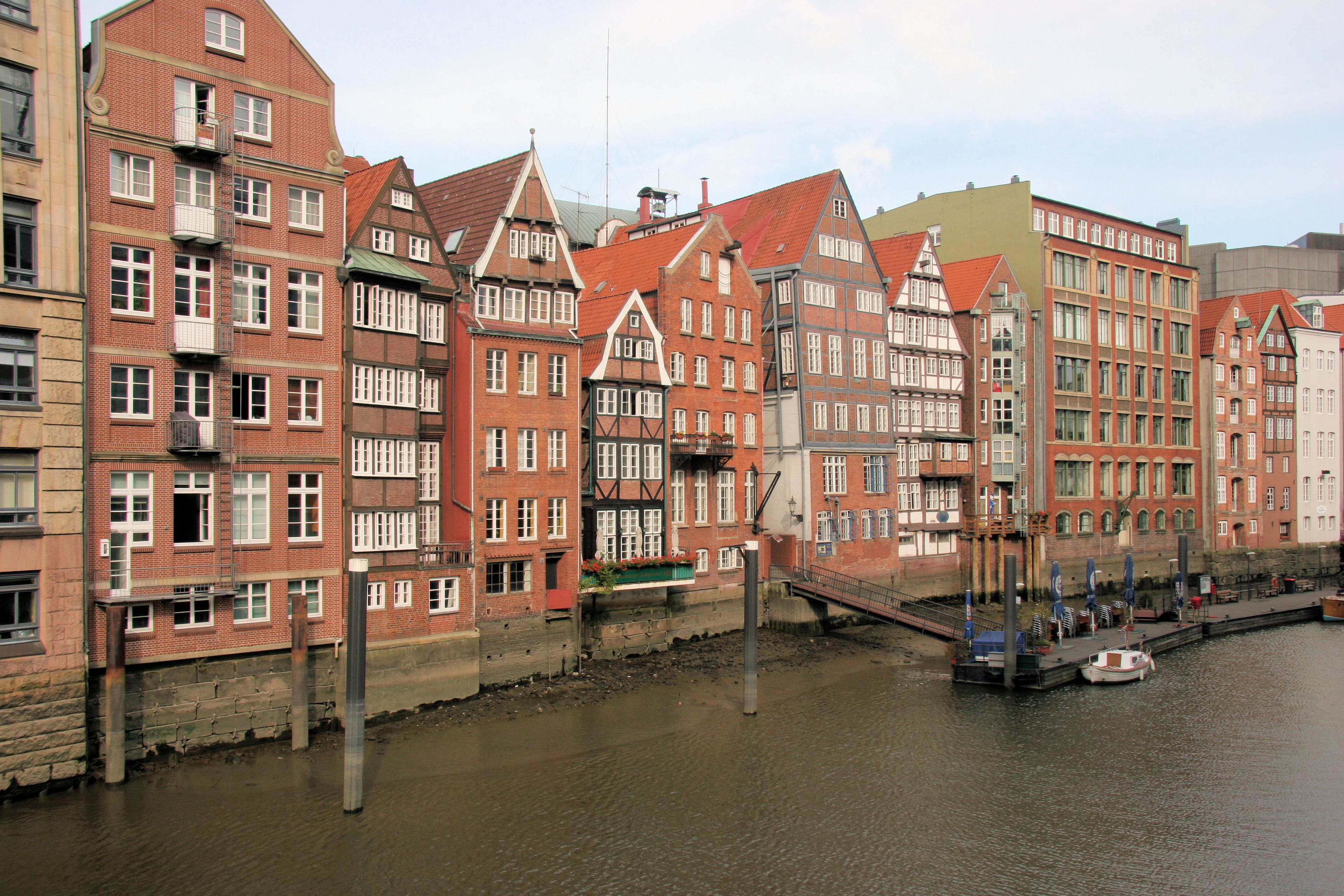
Some impression of what Hamburg must have been like is given by this older area near the Elbe which has been restored or rebuilt. The older buildings, like other Hanseatic cities such as Amsterdam, are equipped with a pulley system on the gables so that goods or furniture can be lifted into the upper stories via the windows and transported to the house by water.
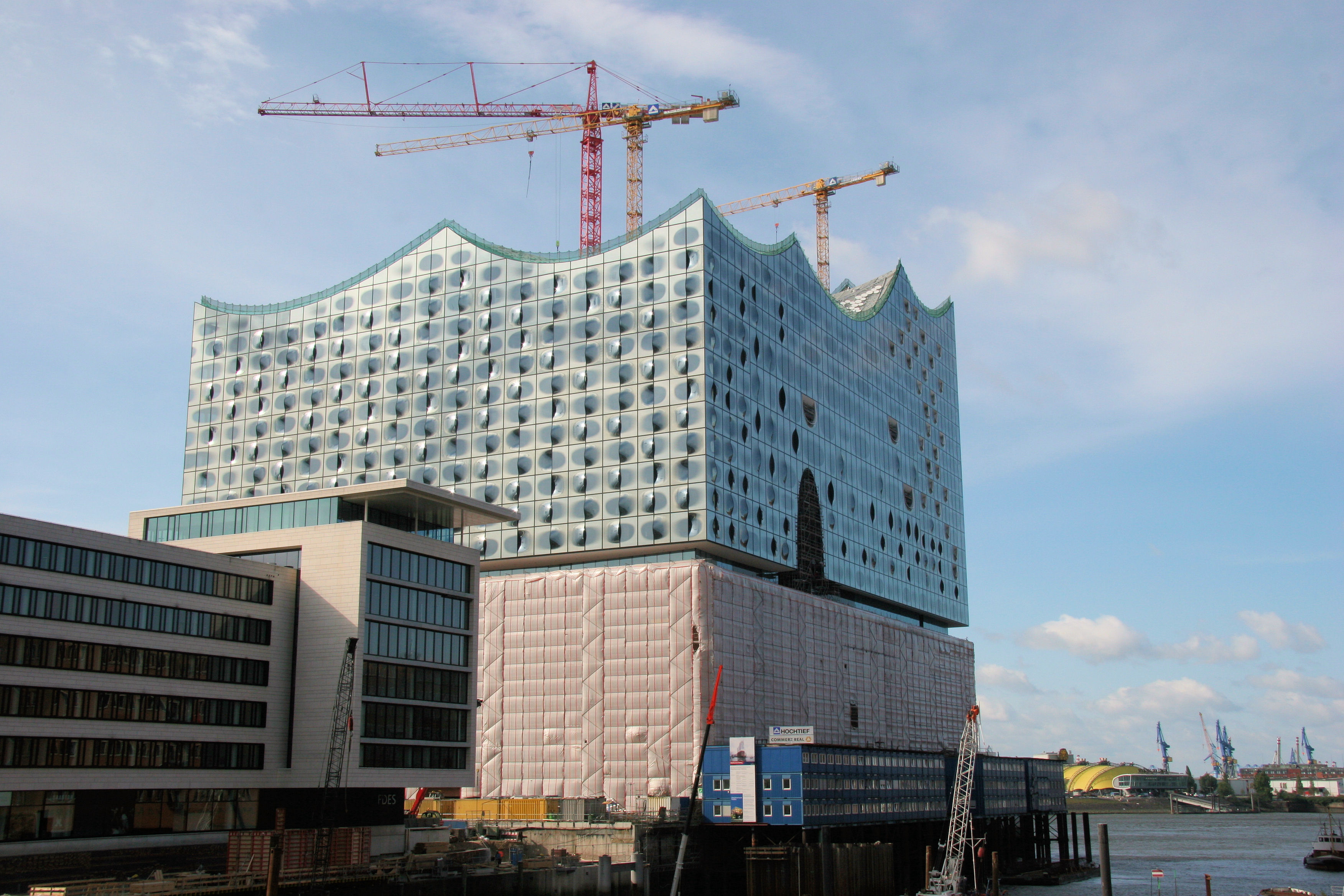
The most ambitious redevelopment is the Elbephilharmonie, under construction during our visit, which contains a concert hall, hotel and apartments and dominates the port area.
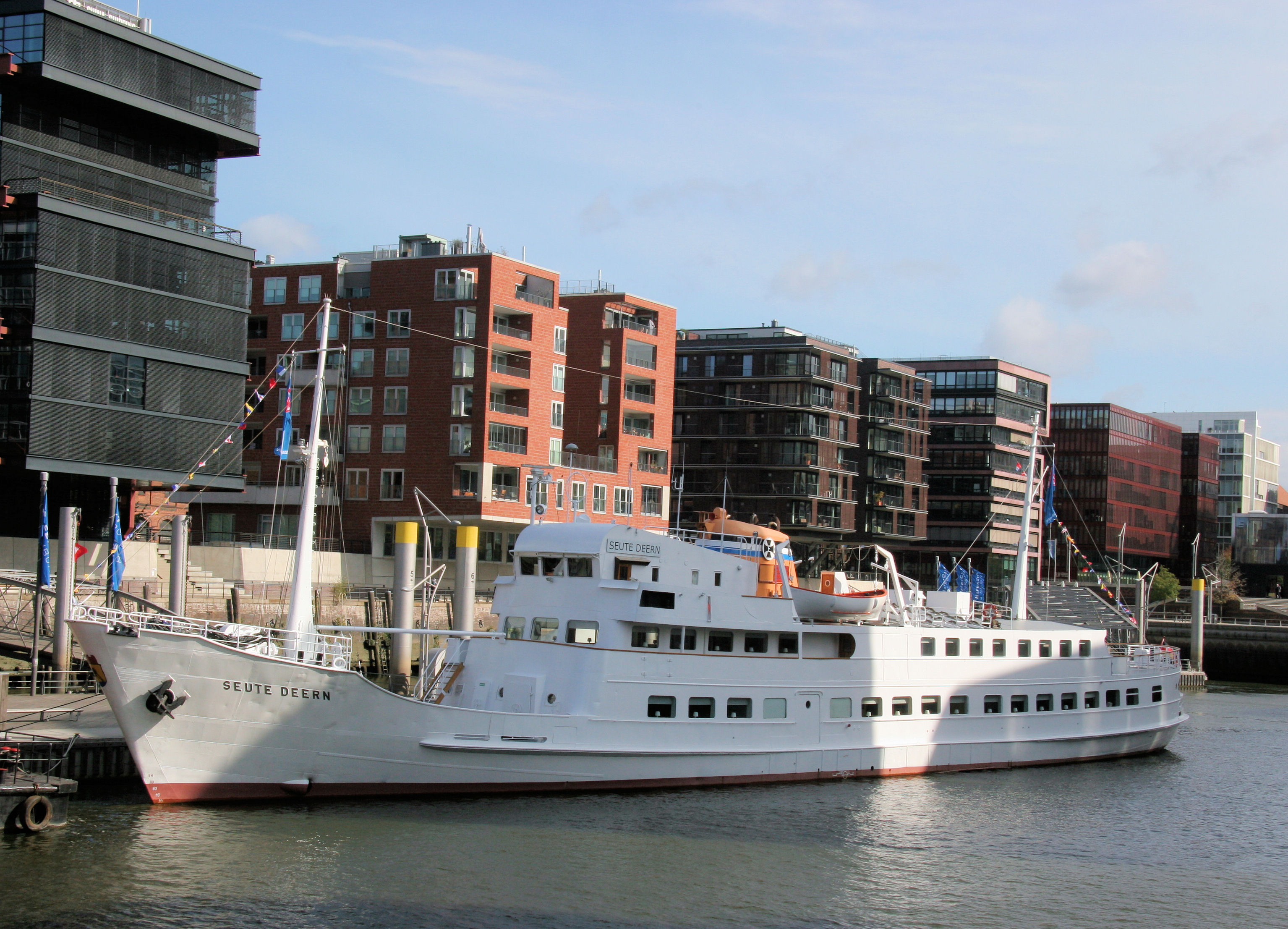
More modest modern development.
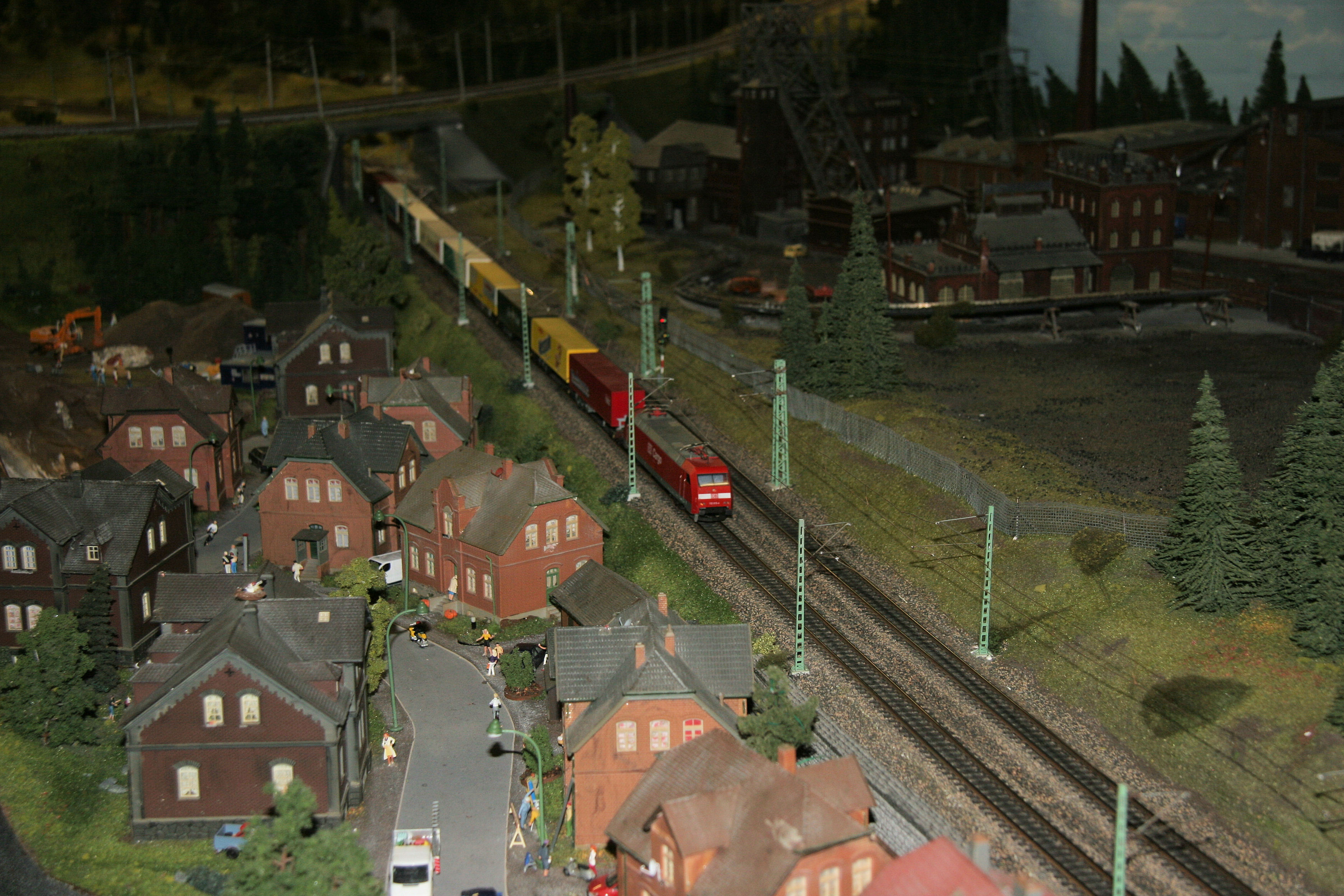
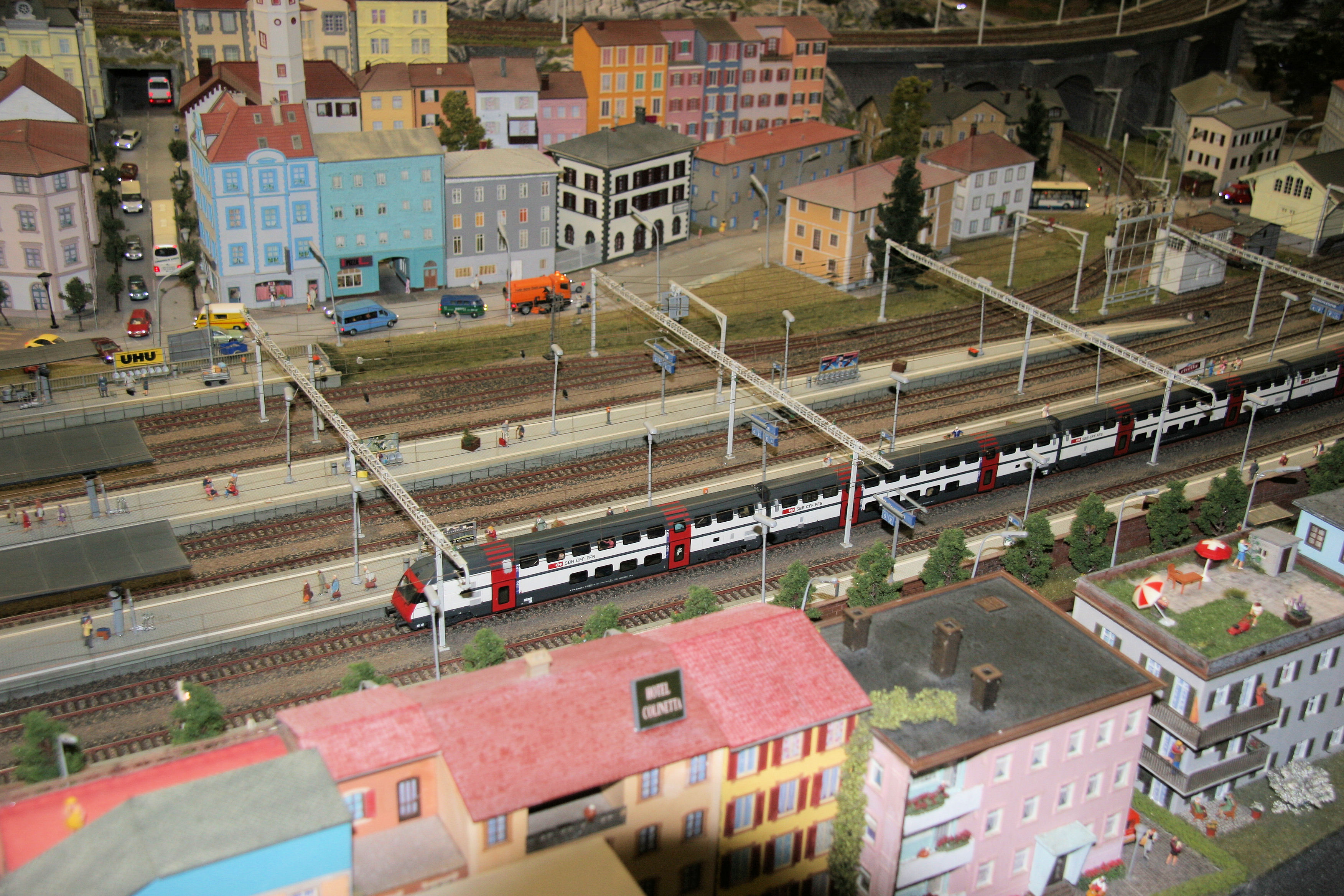
Not far from the Elbephilarmonie is Minatur Wunderland, the worlds largest train set. It takes up the top floor of a large warehouse close to the docks and is remarkable for its attention to detail.There is so much to see here. There are urban layouts with towns and large stations. Elsewhere there are sections that model Swiss railways with mountains, tunnels and viaducts. There is even an airport with planes taking off and landing. There is enough to keep one entertained for an hour or two.
It is noticeable in Minatur Wunderland that the seats provided are always occupied by bored wives and mothers, while it is the men and boys who are standing watching the trains. Very puzzling!
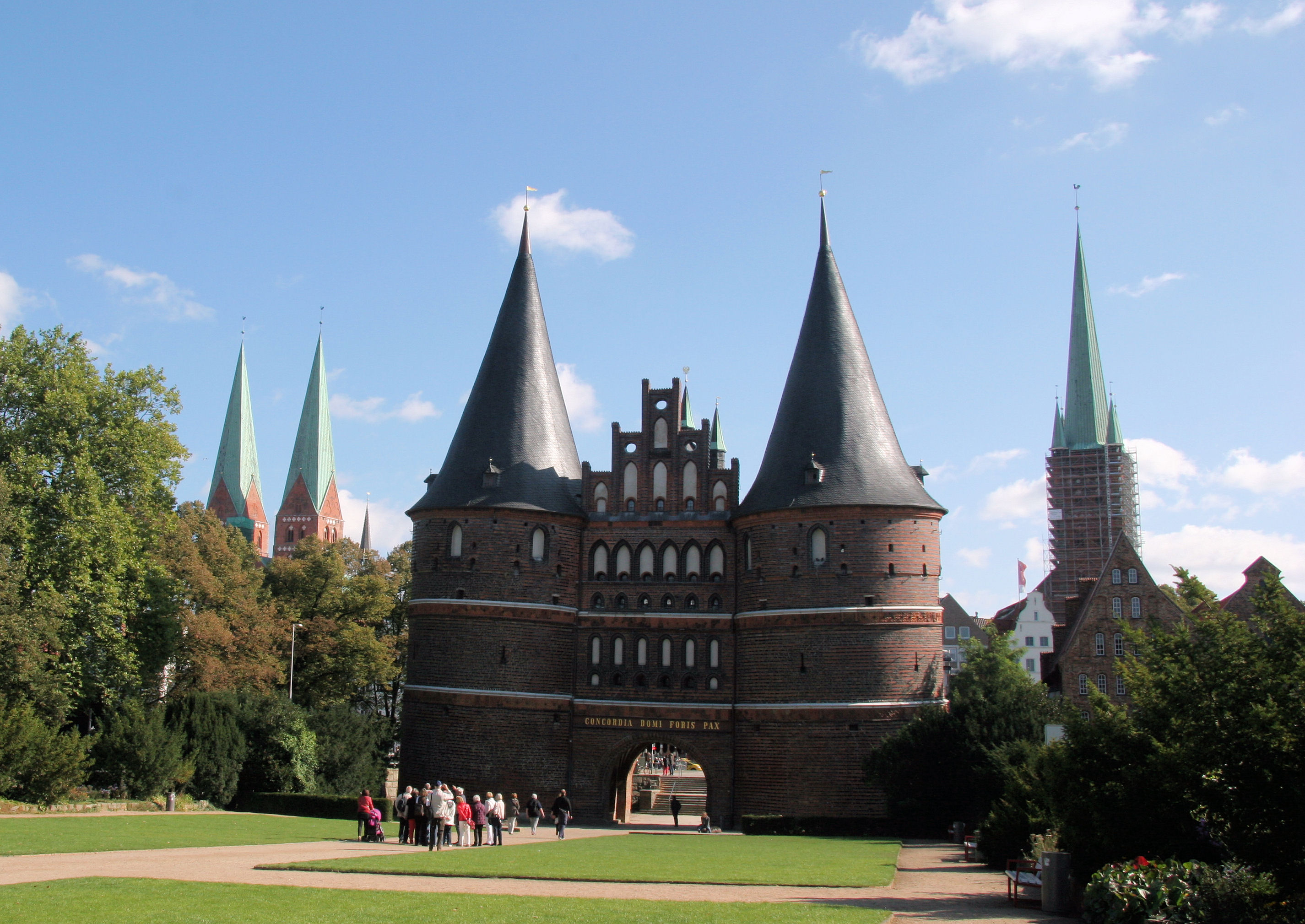
Like Hamburg, the nearby city of Lubek was a Hanseatic port and an important medieval trading centre- much more important than Hamburg in those days. Another difference is that it seems to have been treated more kindly by the RAF and more of the older parts have remained intact, like this impressive city gate, the Holstentor, one of the two still standing. The twin towers to the left are of St Mary's church which sadly, did not escape the attentions of the RAF.
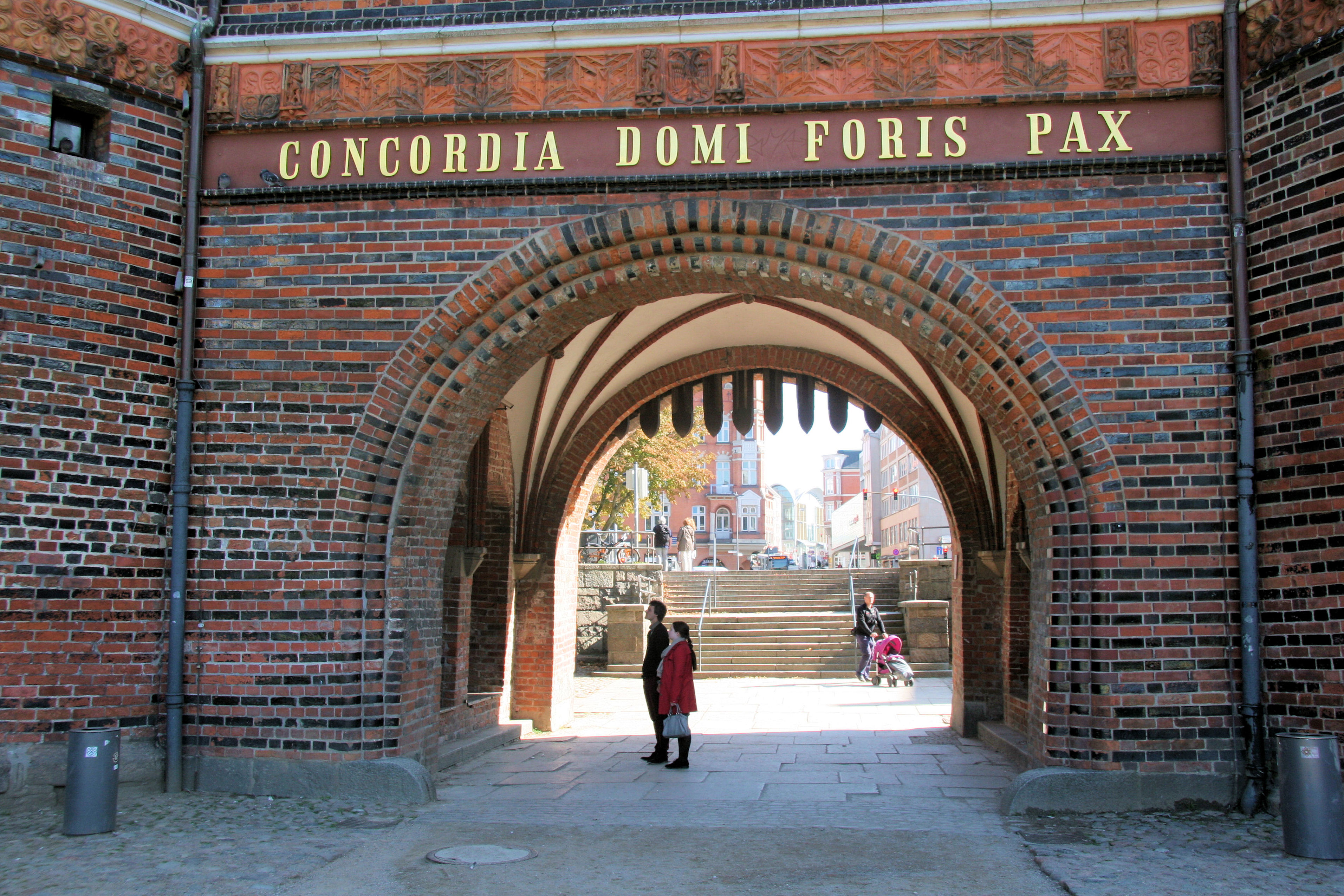
The oldest part of the city is on an island formed by two branches of the River Trave.
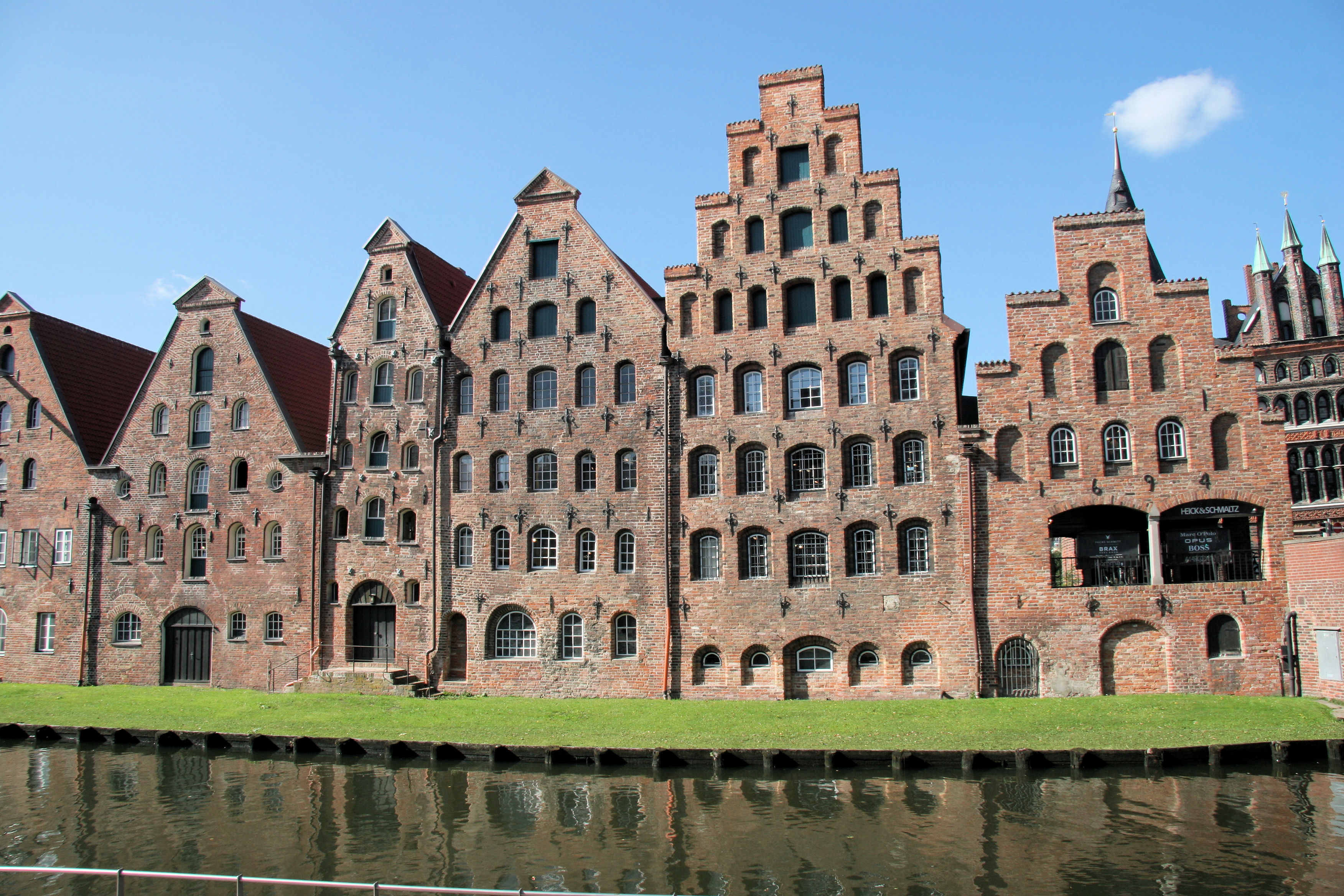
This is the Saltzspeicher, or salt warehouse. Salt was stored here before being distributed around the other Baltic ports.
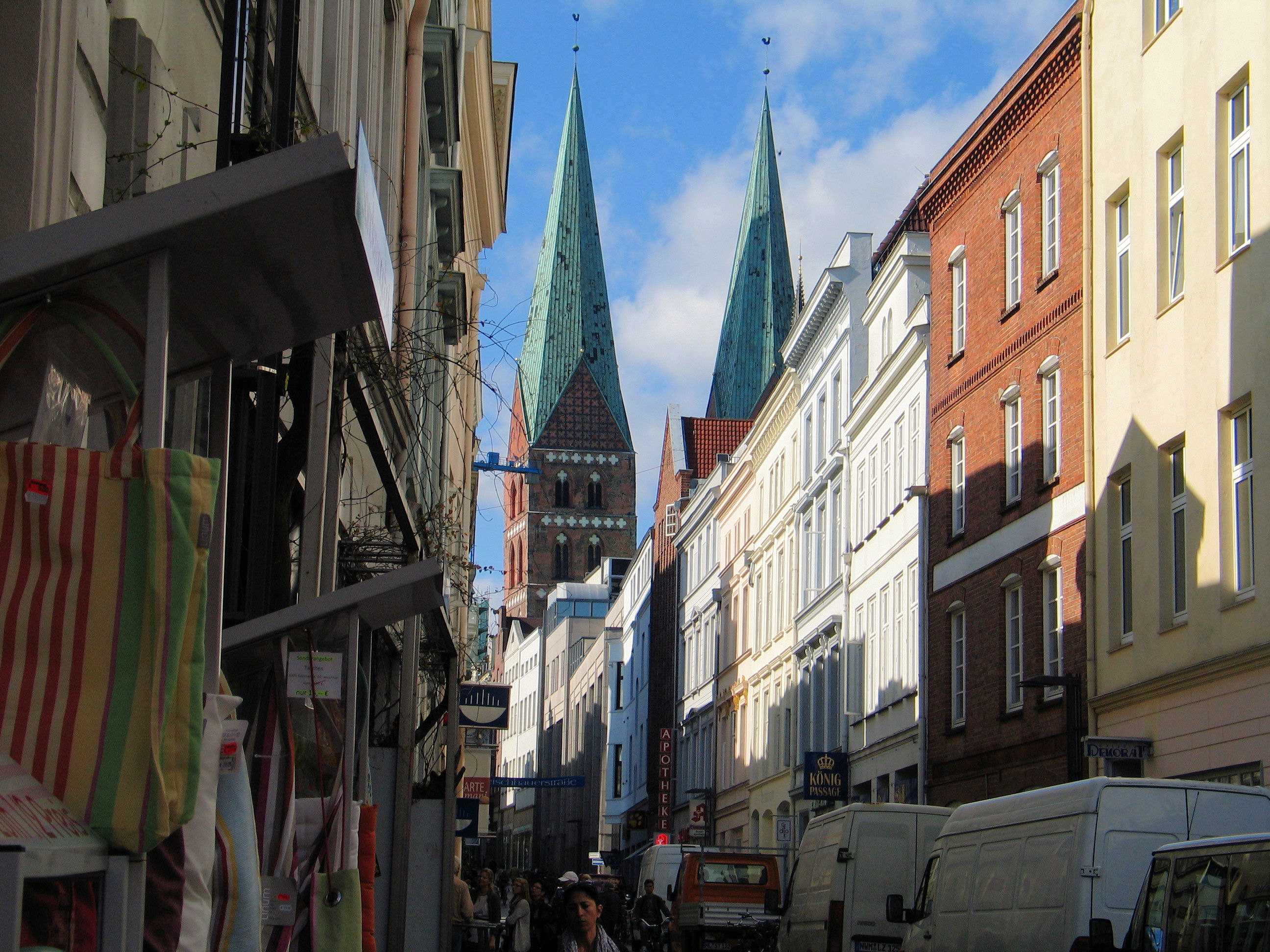
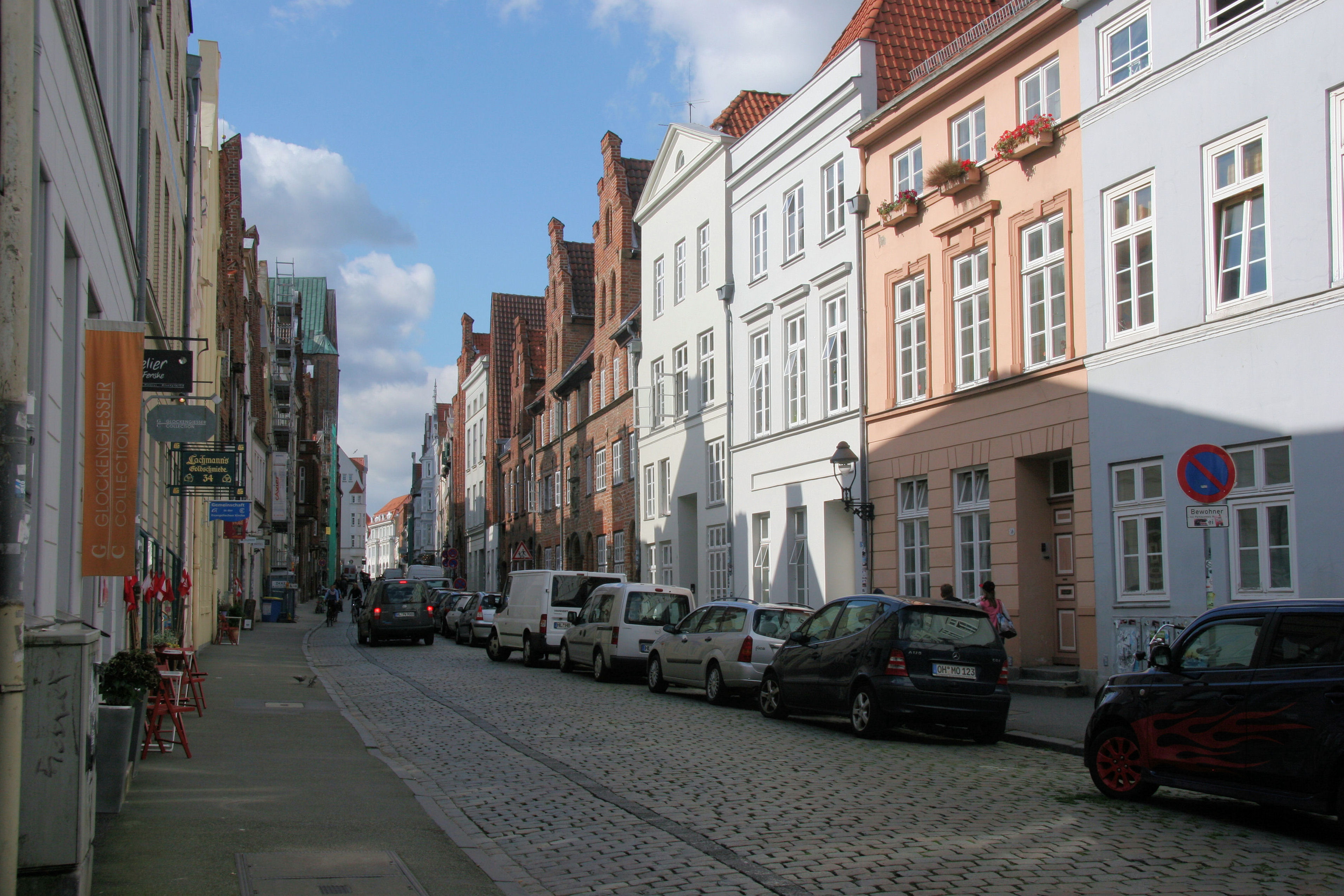
Tall town houses with characteristic stepped gables line the streets of the old town.
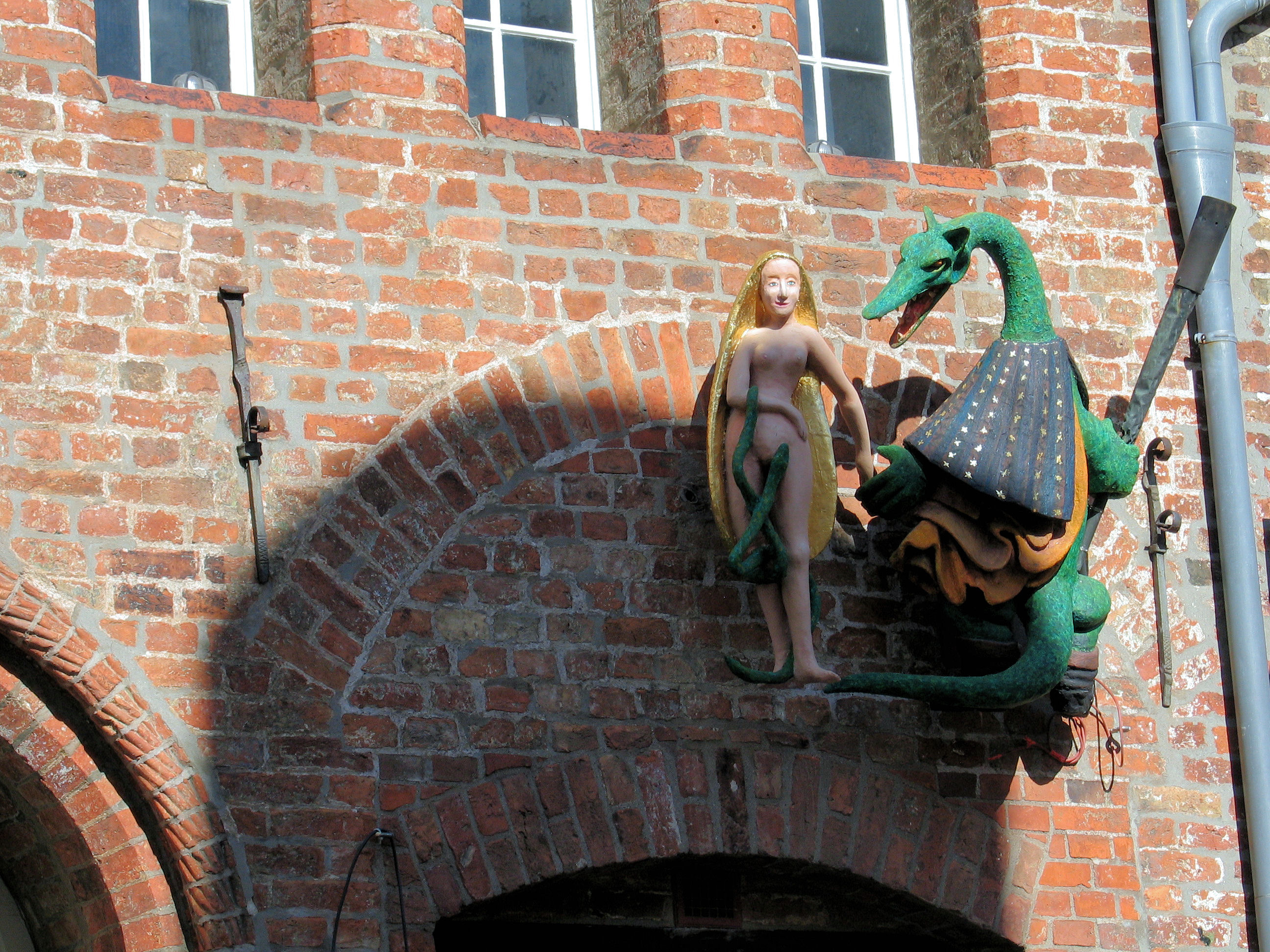
We were not entirely sure what is going on here!

There were originally four city gates. This is the other surviving gate called the Burgtor built around 1444.
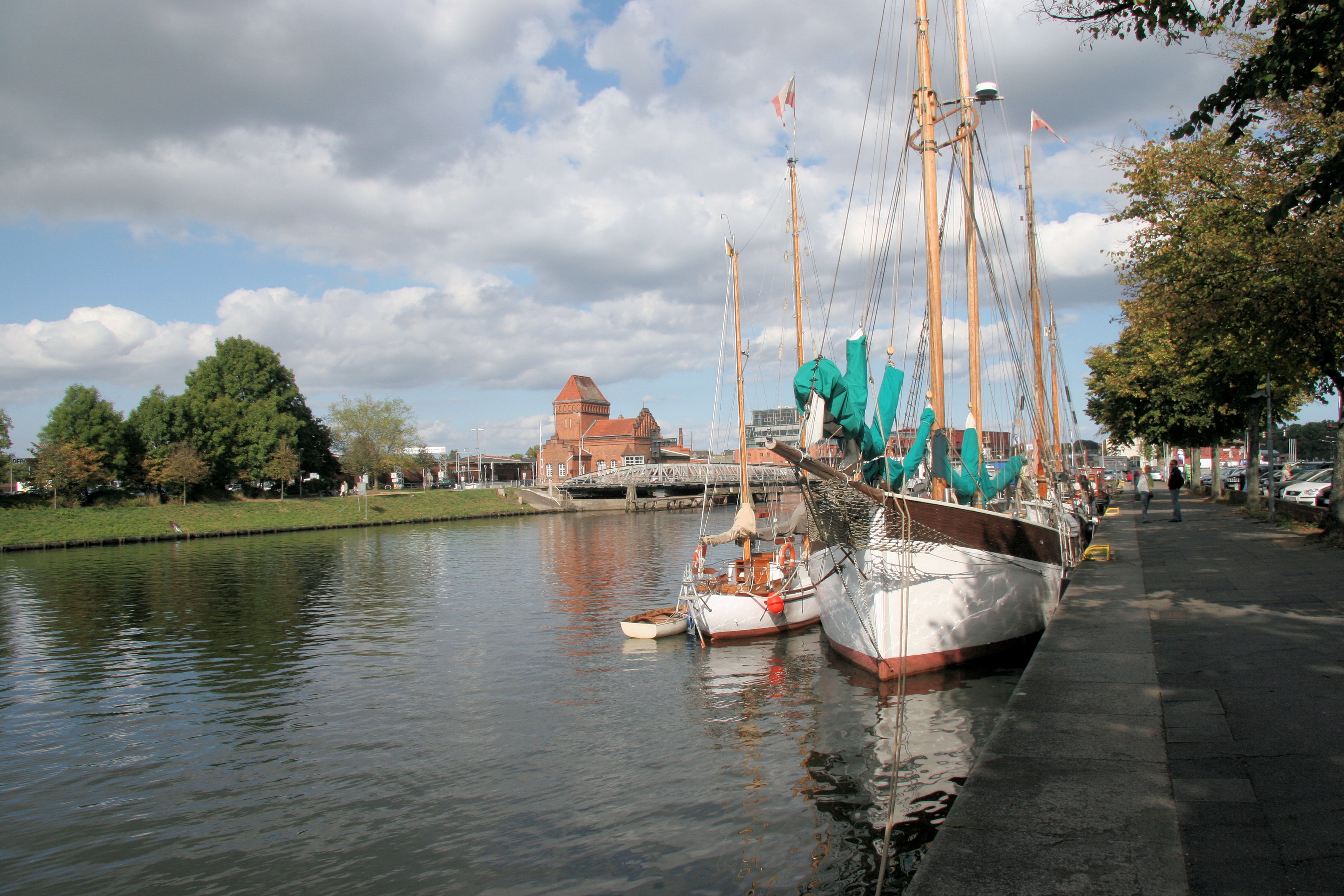
Former river docks now provide a pleasant walk along the river bank.
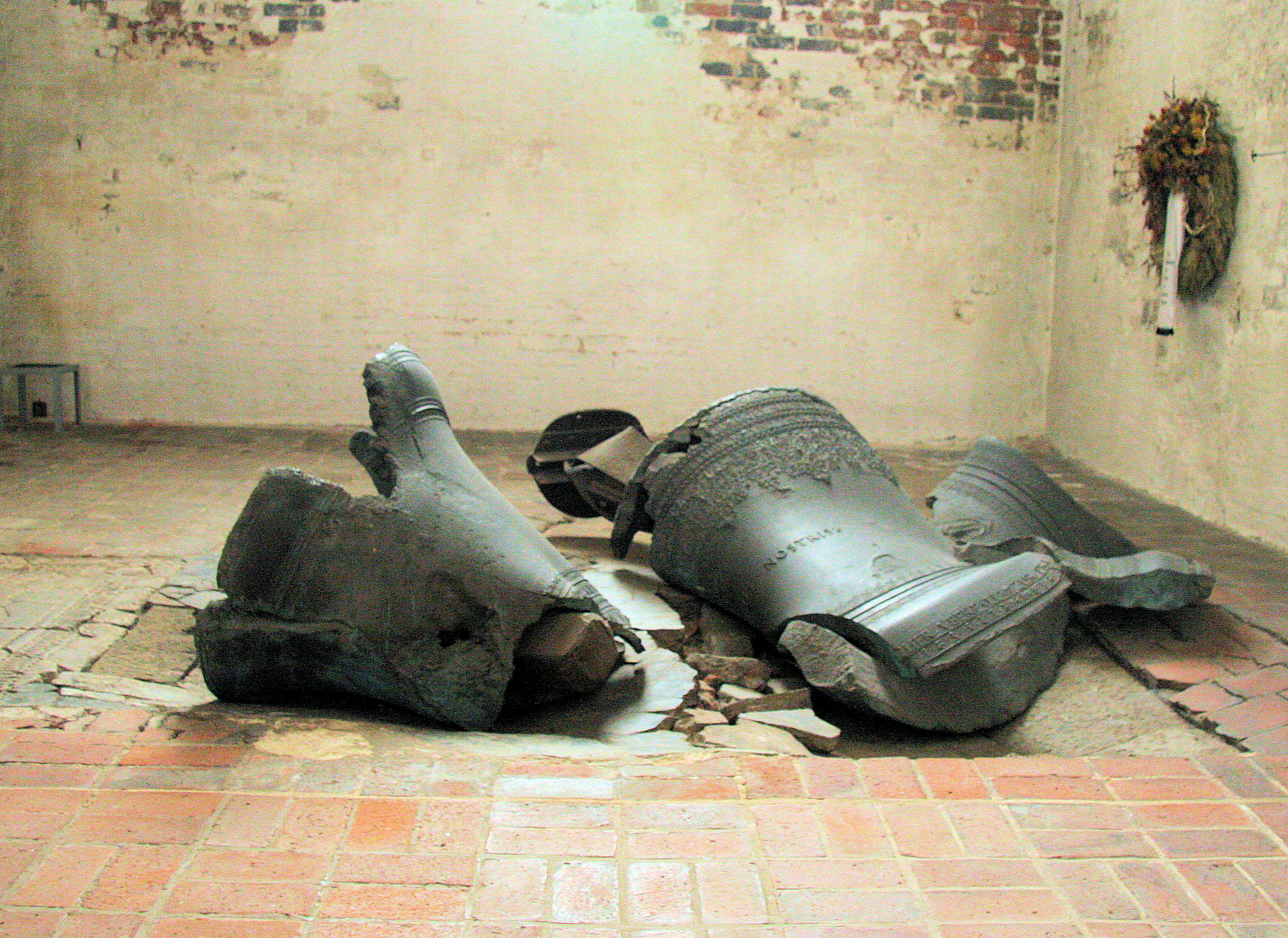
In 1942 Lubeck was attacked by Bomber Command and St Mary's Church was hit. A fire broke out and the church was largely destroyed. As the bell tower burnt away the bells came crashing down to the ground where they have lain to this day. A powerful symbol!
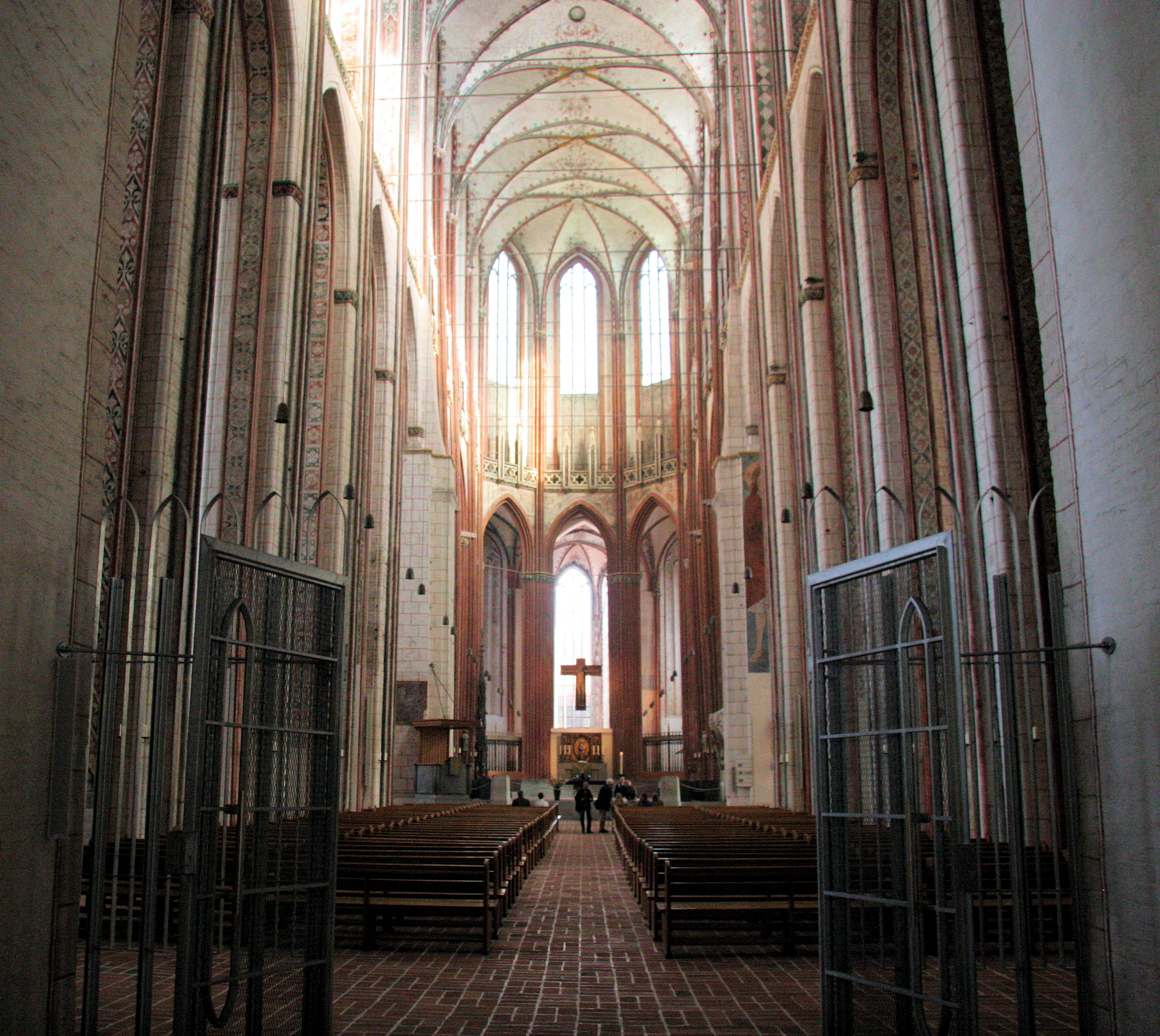
The church has since been rebuilt, using as much as possible the original bricks, but the scars of 1942 are clearly visible. In places the brick walls bear scorch marks, statues have bits broken off and new stained glass windows are designed to look as though twisted in the heat.
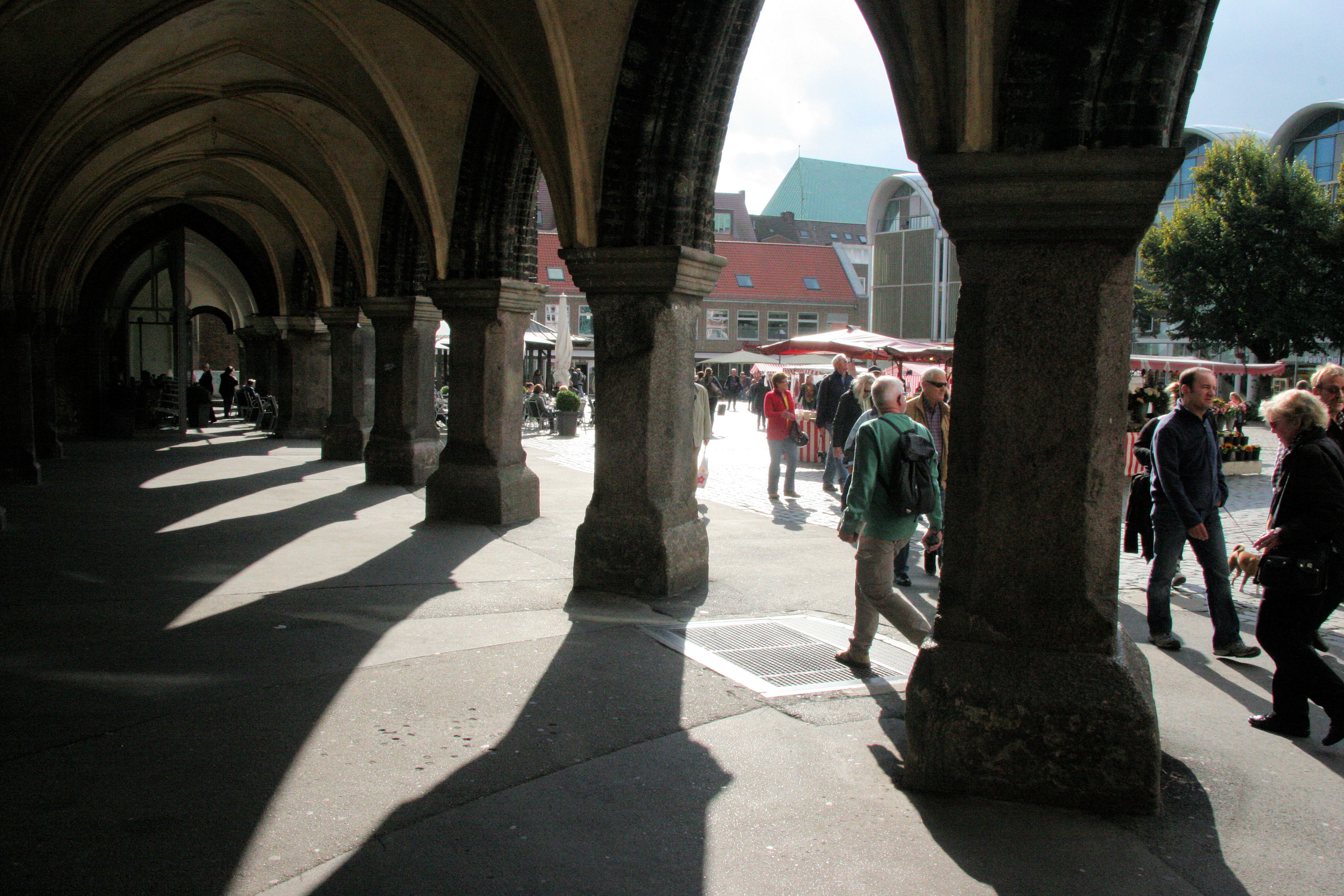
The market square.
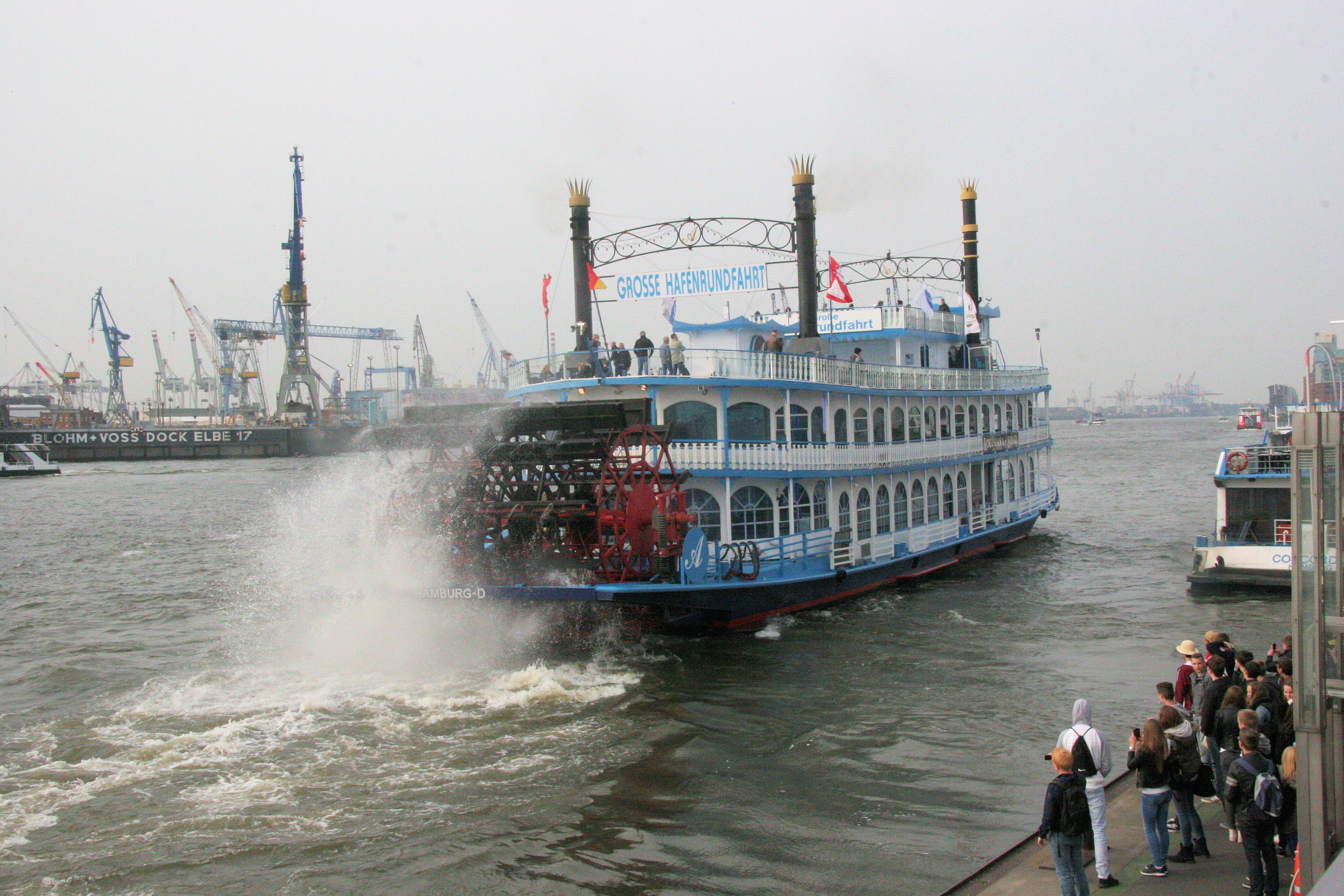
On our last day in Hamburg we walked for two miles along the Elbe to look at the port area. It is possible to tour the docks by boat, but we were put off by the large numbers of school parties we would have encountered.
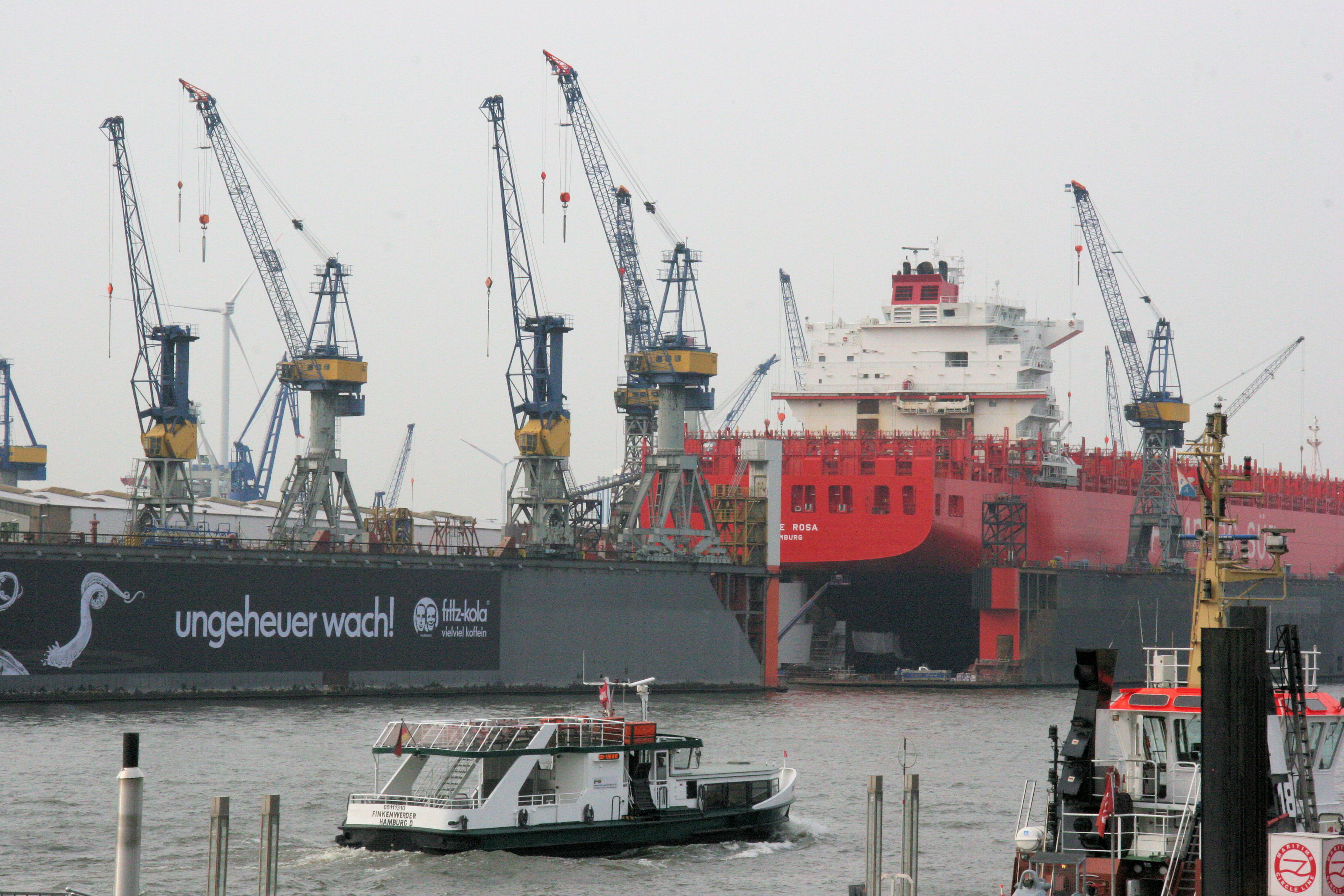
Hamburg is still an important ship building centre.
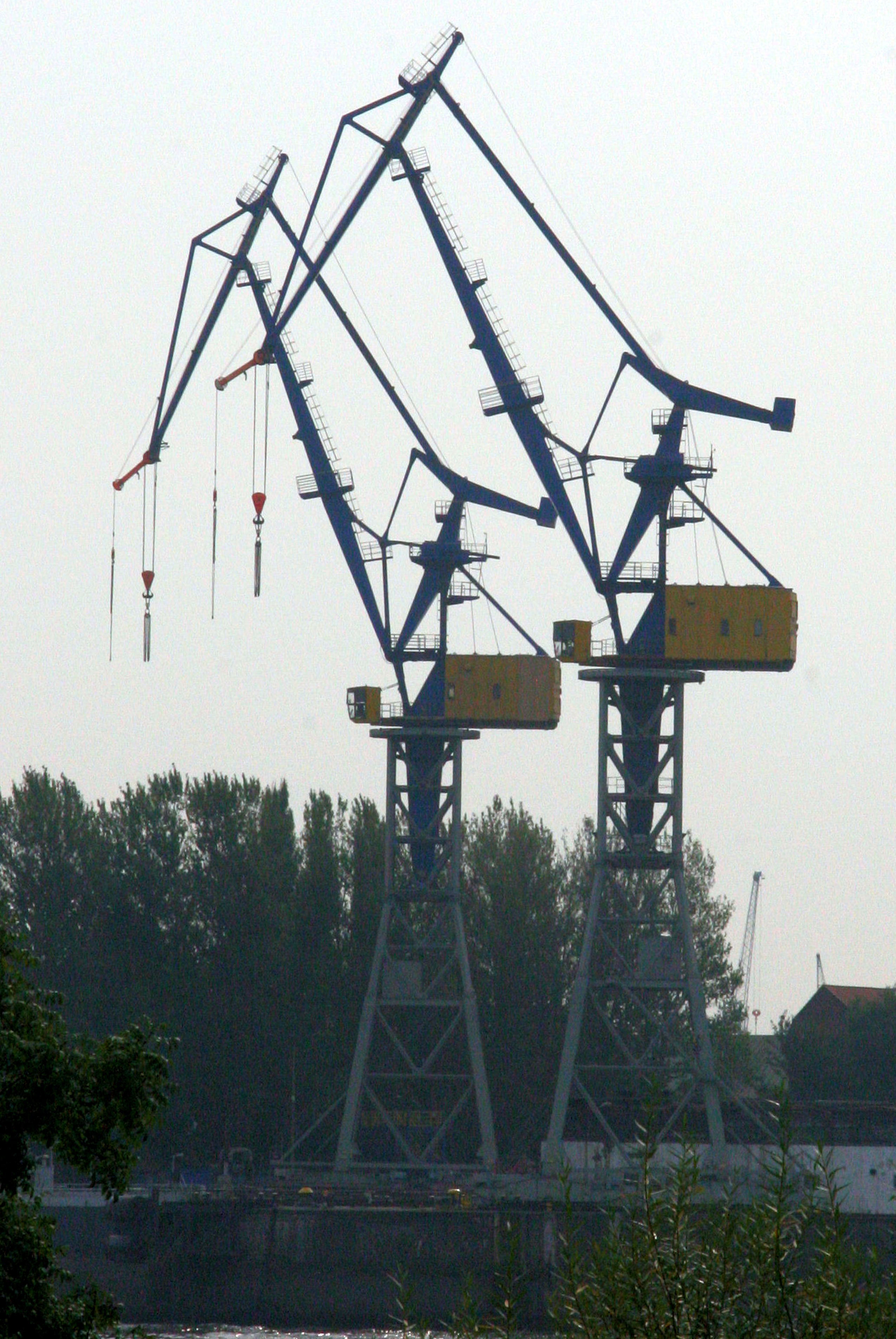
These large ship building cranes have a bird like quality...
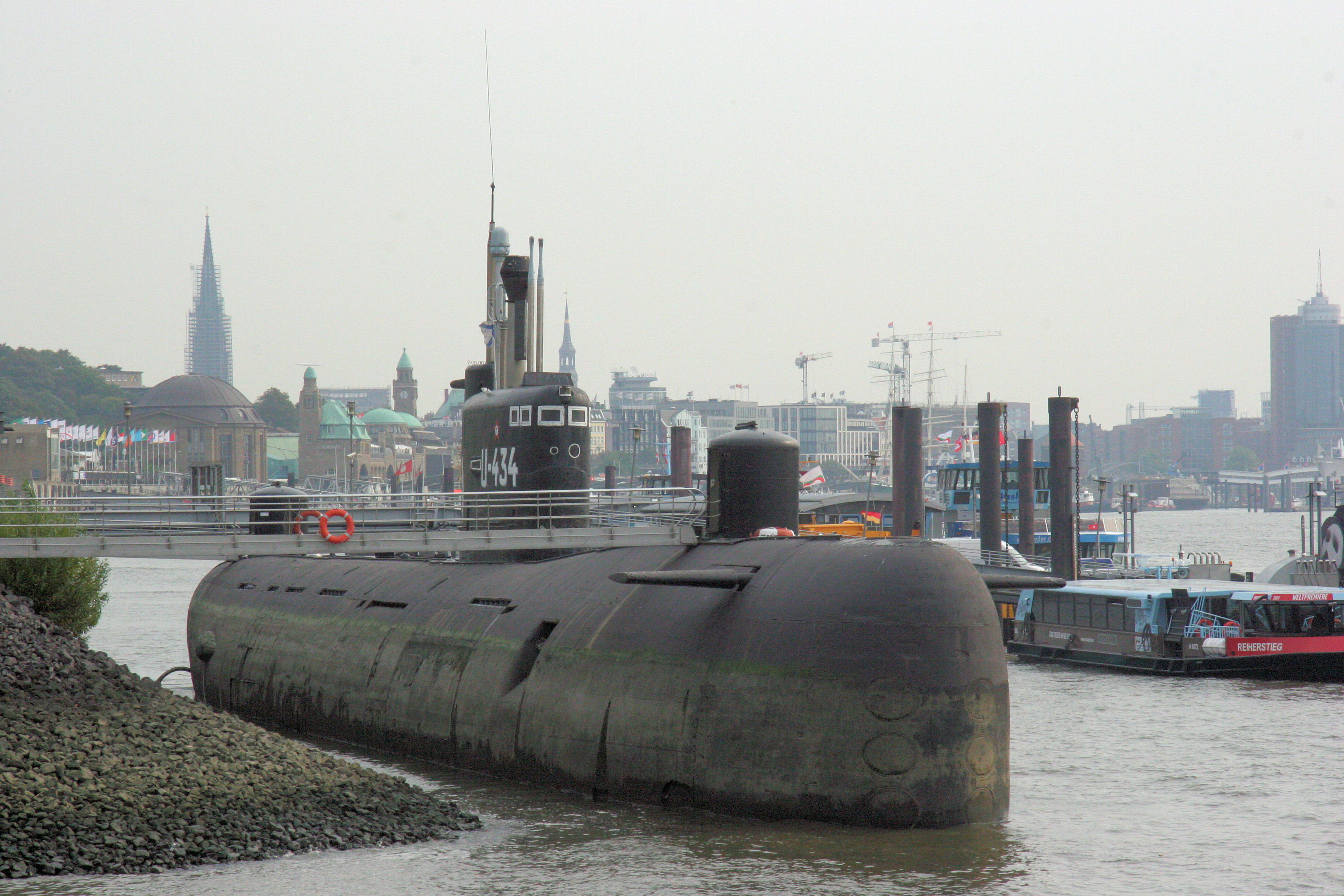
Just another tourist attraction today but to our generation it is rather more sinister. I have never been able to reconcile the fact that the men who fought in these things - just like the men who flew the bombers over Lubeck - were incredibly brave, self sacrificing and displayed many other admirable traits, yet all that was to further ends that were, essentially, wicked.
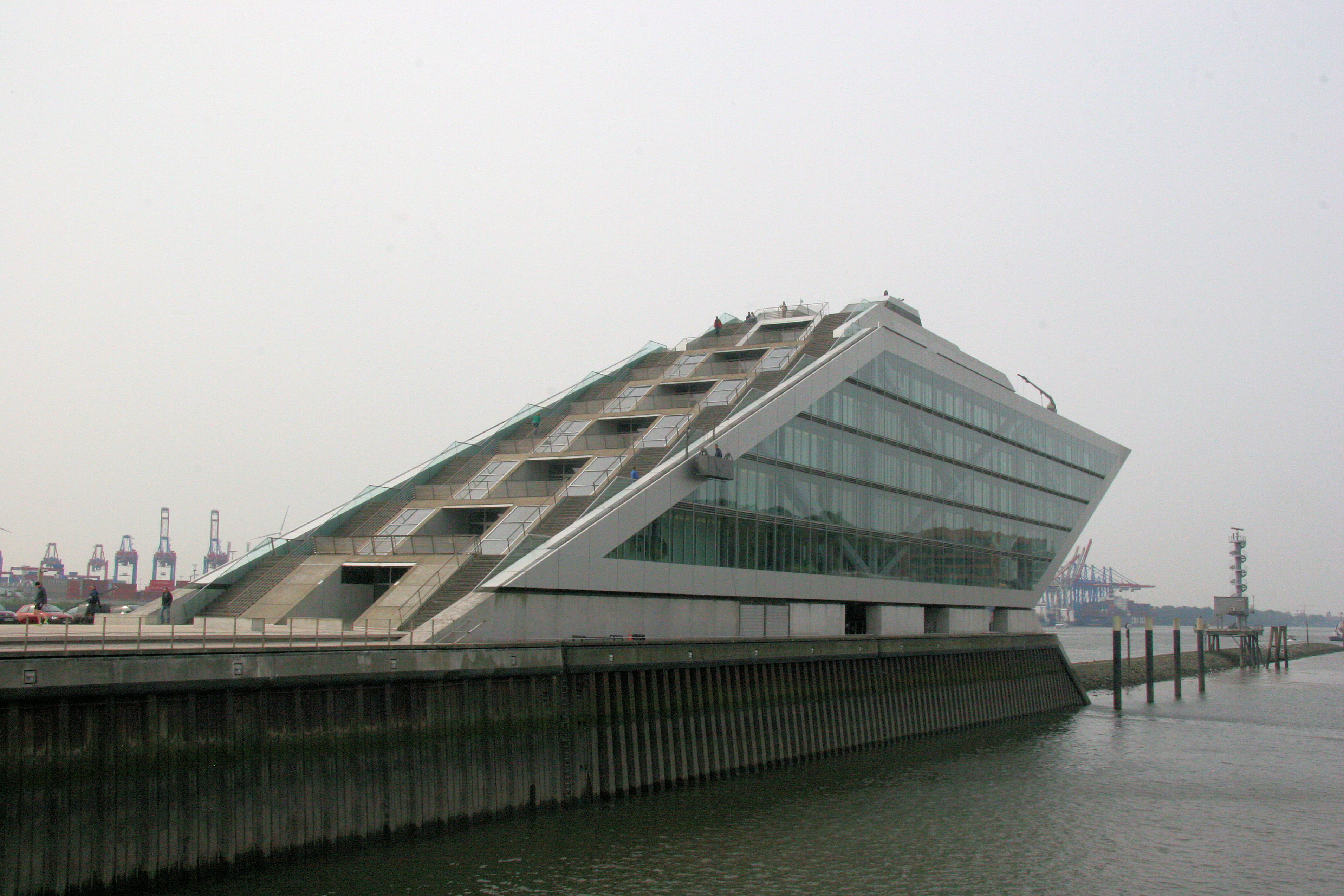
I think I get this one. Offices, overlooking the port, built to resemble a ship?
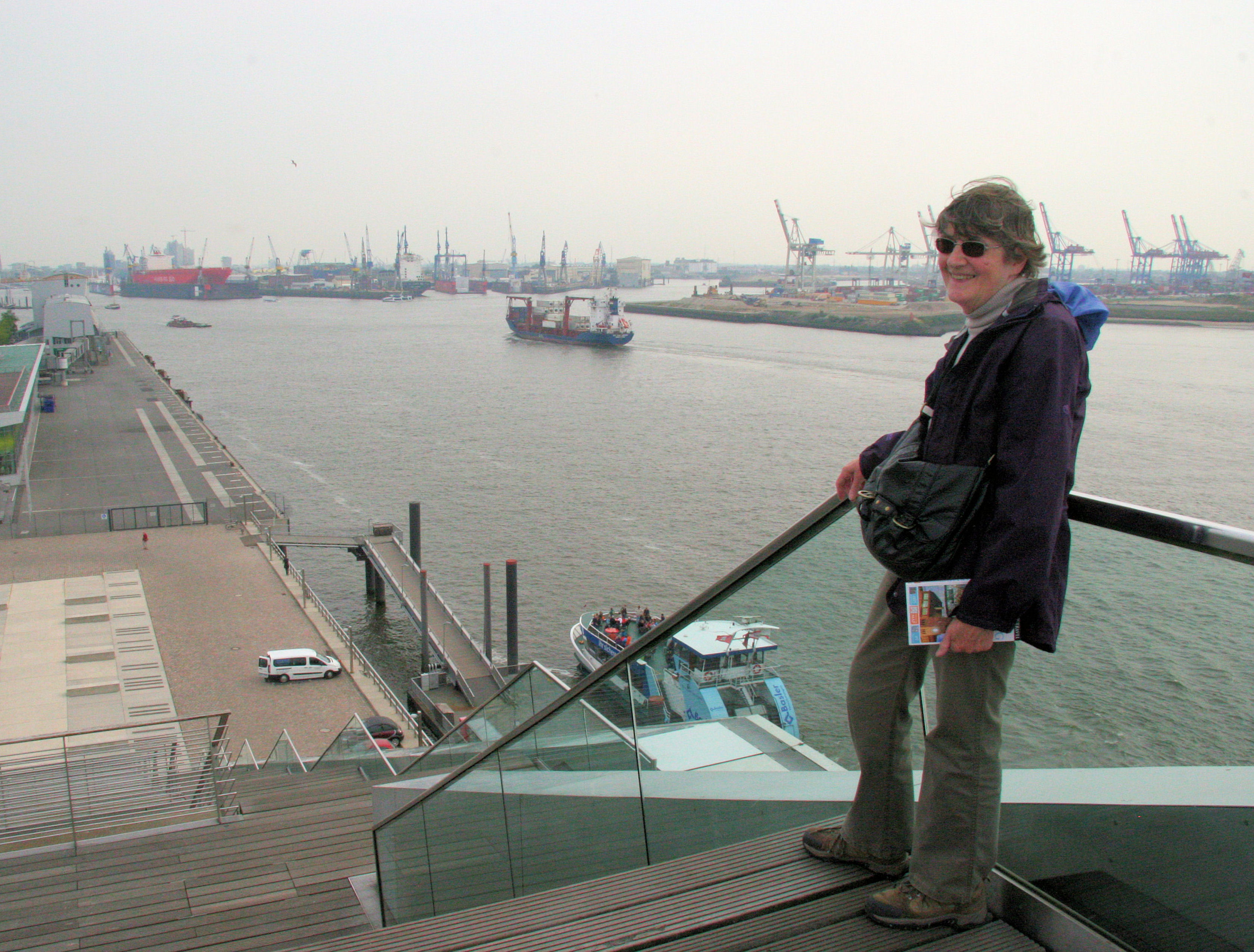
And there is a good view from the top.
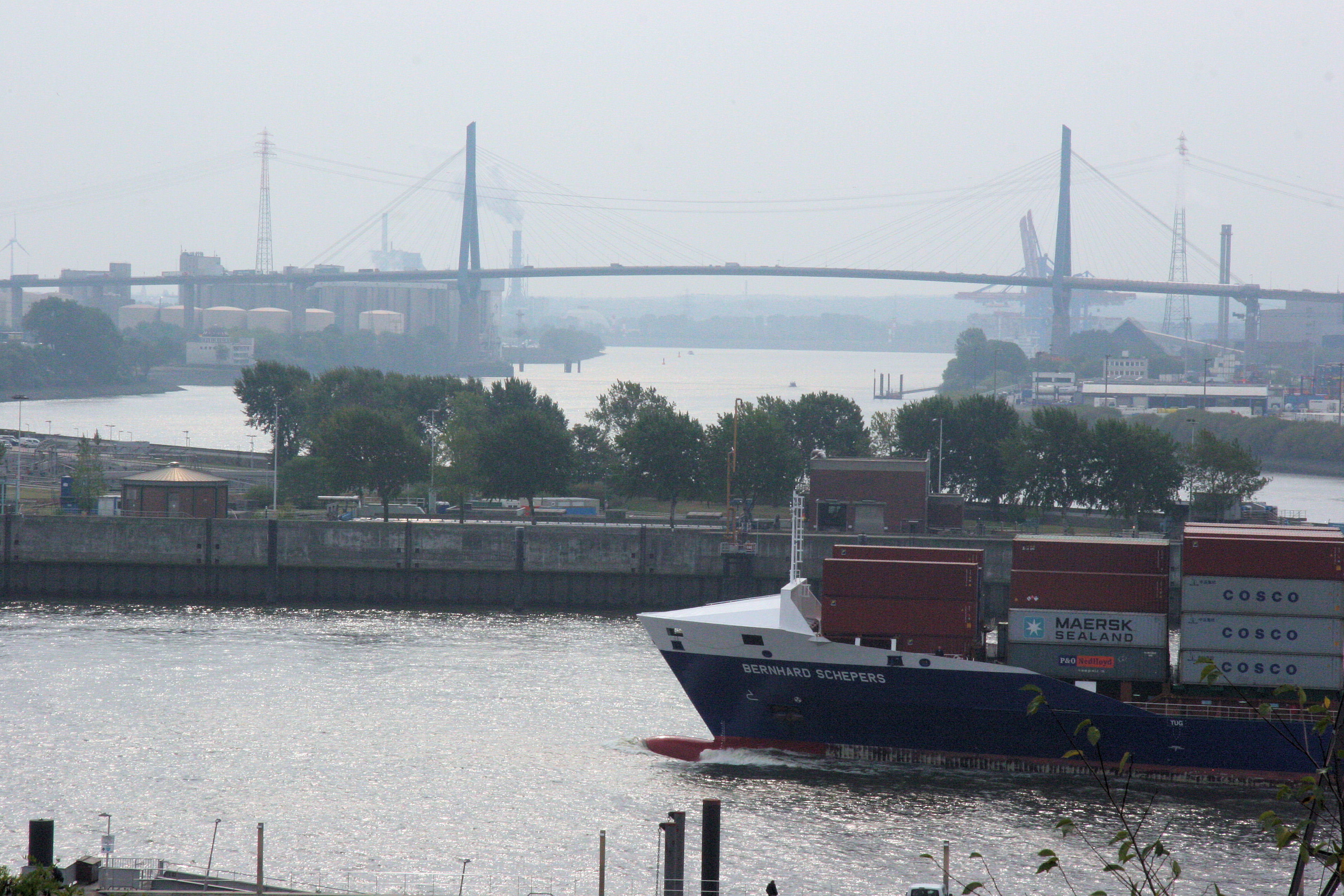
We loved Hamburg. We finished our visit with a concert at the Laeiszhalle to hear Leif Ove Andsnes playing a Beethoven Concerto which was very special. But so is the city - vibrant, busy, historic but also very much looking forward.
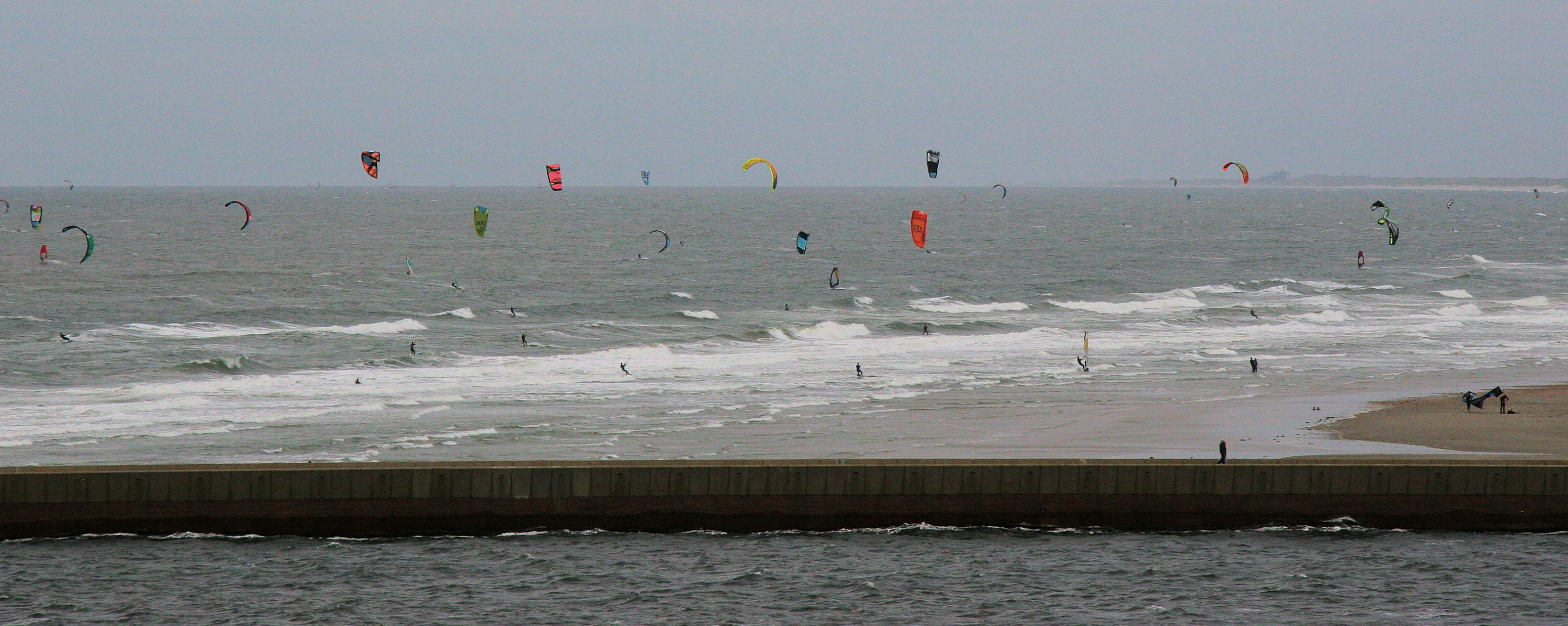
We travelled home via Amsterdam and the ferry to Newcastle. I quite enjoyed this scene as the ferry left Ijmuiden.